
Special Events

Isra and Miraj: Story of the Prophet’s (S.A.W.) Miraculous Journey
Isra and Miraj is a very important and significant event for Muslims around the world. It is considered one of the most sacred of miracles of Allah and is a great source of inspiration and guidance for all of humanity.
When is Isra and Miraj 2023?
This year, Muslims around the world will commemorate the event on the night of Friday, February 17th, 2023 (in some countries, it will be on Saturday, February 18th, 2023).
Prophet’s (S.A.W.) Journey
Prophet’s (S.A.W.) miraculous journey of Miraj took place in two parts. First Prophet Muhammad (S.A.W.) went from Masjid Al-Haram to Masjid al-Aqsa and then he (S.A.W.) ascended to heaven by the will of Allah.
(Ref: Surah Al-Isra 17:1)
Through ascension to the heavens, Prophet (S.A.W.) stopped by all seven layers of heaven and met Prophet Adam (A.S.) on the 1st heaven, Prophet Isa (A.S.) and Prophet Yahya (A.S.) on the 2nd, Prophet Yusuf (A.S.) on the 3rd, Prophet Idris (A.S.) on the 4th, Prophet Haroon (A.S.) on the 5th, Prophet Musa (A.S.) on the 6thand Prophet Ibrahim (A.S.) on the 7th heaven.
(Ref: Sahih Bukhari: 3207)
The Prophet (S.A.W.) was carried to Sidrat al-Muntaha (Large Lote-Tree that marks the end of Heaven). Sidrat Al-Muntaha is the limit beyond which no creation of Allah is allowed to cross. Jibrael (A.S.) stopped at this tree, but only Prophet Muhammad (S.A.W.) was allowed by Allah to pass this boundary.
After Prophet (S.A.W.) crossed Sidrat Al-Muntaha, he (S.A.W.) was then presented to the Divine Presence of Allah. Allah gave him three gifts during this blessed journey:
Ordination of Five daily Prayers (equal to the reward of 50 daily Prayers). (Sahih Bukhari: 7517)
Allah's promise to the Prophet (S.A.W.) that the sins of his Ummah will be forgiven except for those who died in shirk. (Sahih Muslim: 173)
Last Two Verses of Surah Al-Baqarah.
After completing this blessed journey, Prophet (S.A.W.) mounted Al-Buraq and returned to Makkah. The whole journey of Isra and Miraj took place in one night.
Should we Celebrate this Night?
Even though this journey has religious significance in Islam, neither the Prophet Muhammad (S.A.W.) nor any of his Companions (R.A.) ever observed it. However, we can remember this historic event by praising Allah, seeking His favour, helping the needy, and carrying out the good deeds that Allah and His Messenger (S.A.W.) have taught us to do.
Overall, the Night Journey teaches us many important lessons about faith, prayer, unity, and patience. It reminds us of the importance of these values in our daily lives and our spiritual journey.
The Quran, written centuries ago, contains profound hints at future discoveries. It includes scientific facts that surpass the knowledge of anyone who lived in the 7th century. This serves as compelling evidence of the divine nature of the Quran.
This year, Nisf Shaban (Shab-e-Barat) will start after the sunset of Tuesday, March 7th, 2023.
Isra and Miraj (The Night Journey) is miraculous journey that Prophet Muhammad (S.A.W.) took in one night from Makkah to Bait al-Maqdas and then an ascension to the heavens.
We can learn many lessons from the life of Prophet Muhammad (S.A.W.) which include how to be honest, humble and resourceful in any situation that we face9.
* user name and email shouldn't be left empty


- 0115 911 7222
Explore Muslim Hands

Al-Isra' wal-Mi'raj: The Story of the Ascension to the Skies

'He [saw] certainly saw some of his Lord’s greatest signs'.
[The Noble Qur’an, 53:18]
What is the Mi'raj?
You can read our blog post on the first half of the Prophet's miraculous night journey here.
We now turn our attention to the miraculous Ascension – Al-Mi'raj of the Prophet (saw). The word Al-Mi'raj is a noun of instrument in Arabic morphology, which literally means ‘an instrument you use to ascend’. The question is what did this divine instrument or ladder look like?
Let us mention a couple of descriptions we have for it from reliable Islamic sources:
The Prophet (saw), 'saw the wide-eyed maidens of Paradise at the left of the Rock [at the Dome of the Rock Masjid ] . He greeted them and they returned his greeting. Then he asked them something and they replied with an answer that cools the eyes. Then the Prophet (saw) was brought the ladder by which the spirits of the children of Adam (as) ascend. Creation never saw a more beautiful object. It had alternate stairs of silver and gold and came down from the Highest and Amplest Garden of Paradise, Jannat al-Firdaws. It was encrusted with pearls and surrounded with angels on its right and left'. [The Prophet’s Night Journey and Heavenly Ascent by Sayyid Muhammad ibn Alawi al-Maliki]
The Messenger of Allah (saw) also said that, 'a ladder was brought to me finer than any I have ever seen. It was that to which the dying man looks when death approaches'. [The Life of Muhammad (saw) Ibn Ishaq]
Now let’s see what happened when the Prophet (saw) accompanied by Jibril (as) ascended into the layers of sky.
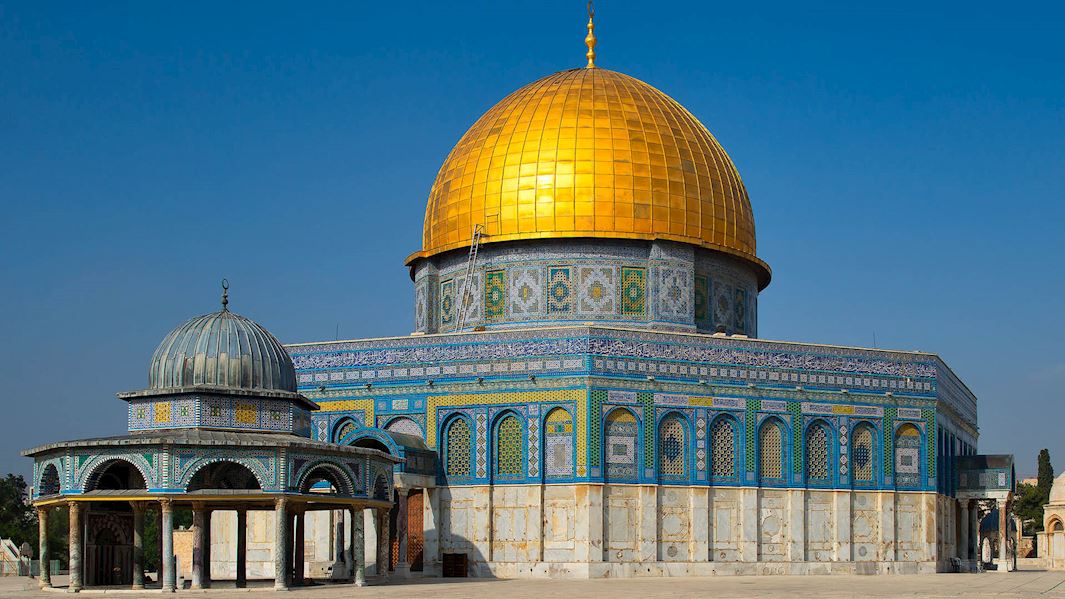
The First Sky
Allah ascended the Prophet (saw) from the Dome of the Rock through the skies, where he not only saw many miraculous sights and numerous angels, he also met the past Prophets (as). Along the way, he (saw) was greeted with excitement and delight, as his arrival had been much-anticipated.
It is hard to imagine how he (saw) must have felt upon meeting his brothers (as), all of whom had gone through trials and difficulties, as they met him with the warmth and love his own tribe had isolated him from. He was greeted with the words, 'Welcome O pious Prophet and pious brother!' (Bukhari). (Adam (as) and Ibrahim (as), however, welcomed him as a 'pious son').
The Messenger of Allah (saw) said: 'Then he ascended with us to the heaven [first layer of the sky and end of the known universe]. Jibril [as] then asked the (gate of heaven) to be opened (by knocking on one of its doors). [Bukhari]
It was said, "Who are you?" He said, "Jibril [as]".
It was said, "And who is with you?" He said, "Muhammad [saw]".
It was said, "Has he been sent for?" He said, "He has indeed been sent for".
And it (the door of the heaven) was opened for us and suddenly I was with (the Prophet) Adam [as]. Then he welcomed me and supplicated for good for me'. [Muslim]
(In other narrations it mentioned the angelic gatekeepers rejoiced at the arrival of the beloved Prophet (saw) and proclaimed, 'Welcome unto him! What an amazing arrival has come!' [Muslim] and 'He is most welcome and amongst family!' [Bukhari]).
In other narrations we gain more details of the meeting of the Prophet (saw) and the Prophet Adam (as):
'There we saw a man sitting with some people on his right and some on his left. When he looked towards his right, he laughed and when he looked toward his left he wept. Then he said, " Welcome O pious Prophet and pious son!" (or in another narration, " Welcome you are amongst family, O my son! What an amazing son you are!" [Bukhari]).
I asked Jibril [as], "Who is he?" He replied, "He is Adam [as] and the people on his right and left are the souls of his offspring. Those on his right are the people of Paradise and those on his left are the people of Hell and when he looks towards his right he laughs and when he looks towards his left, he weeps"'. [Bukhari]
The Second to Sixth Sky
Then the Prophet (saw) continued to ascend the layers of sky with Jibril (as). Again, permission was sought to enter, and the angelic guards were delighted and welcomed the Messenger of Allah (saw).
At the second sky, he met the maternal cousins, the Prophets Isa (as) and Yahya (as).
At the third sky, the Prophet (saw) met the Prophet Yusuf (as) whom he described as having 'been given half of (world) beauty' [Muslim]. The Messenger of Allah (saw) had himself been blessed with all beauty, ma sha' Allah!
At the fourth sky, the Prophet (saw) met the Prophet Idris (as) whose soul was taken there, and he is praised in the Qur’an: 'We raised him to a lofty position'. [The Noble Qur’an, 19:57]
At the fifth sky, he met the Prophet Harun (as); and in the sixth sky, he met Prophet Harun's younger brother, the Prophet Musa (as).
Some narrations mention that Musa (as) was seen crying and a voice was heard saying, 'What makes you cry?' He said, 'My Lord, this is a young man whom You have sent after me (as a Prophet) and his Ummah will enter Paradise in greater numbers than my Ummah '. [Muslim]
At each one of these levels, these Prophets (as) welcomed the Prophet (saw) and supplicated good for him saying, 'Welcome O pious Prophet and pious brother!' [Bukhari]
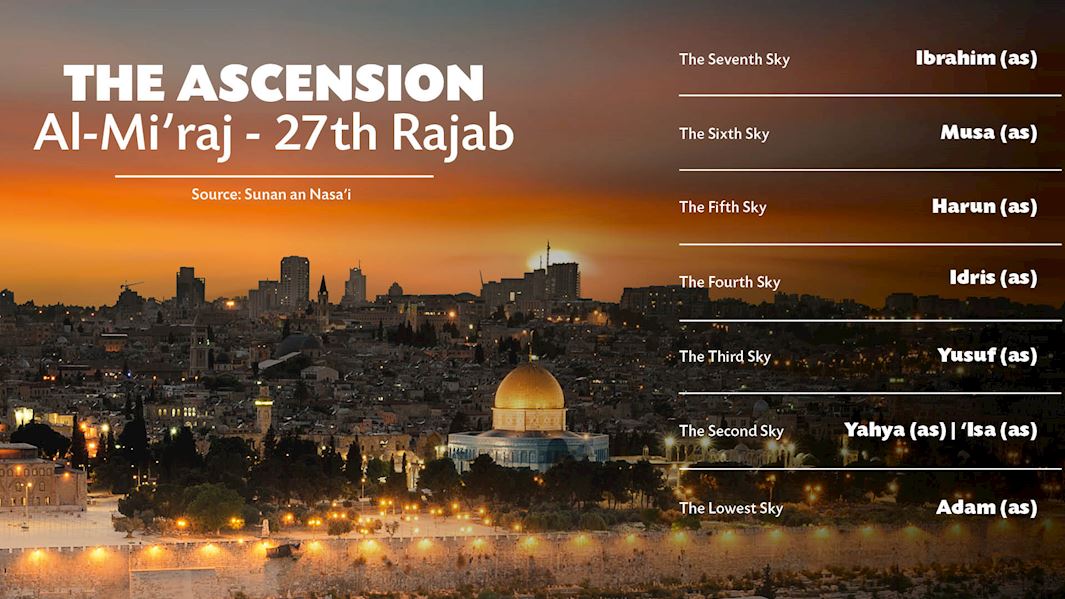
The Seventh Sky
At the seventh sky, the Prophet (saw) met his greatest ancestor, the Prophet Ibrahim (as) who was 'reclining his back against al-Bait al-Ma‘mur. And there enter into it seventy thousand angels every day, never to return to it (again)'. [Muslim]
(Bait al-Ma'mur literally means 'the much-visited House'. It is the heavenly Ka‘bah directly above the one on earth).
Like Adam (as), Ibrahim (as) greeted the Prophet (saw) saying, 'Welcome O pious Prophet and pious son!' [Bukhari]
In another narration, Ibrahim (as) conveyed his salaams to the Ummah of the Prophet (saw) and advised us that, 'Paradise has pure soil and delicious water, and that it is a flat treeless plain, and that its seeds are (saying), SubhanAllah (Glory be to Allah), Alhamdulillah (All praise belongs to Allah), La ilaaha ill-Allah (There is no god but Allah), and Allahu Akbar (Allah is the Greatest)'. [Tirmidhi]
The Lote Tree
The Prophet (saw) carried on his journey, reaching the Furthest Lote Tree. The Arabic word for this is Sidrah al-Muntaha [The Noble Qur’an, 53:14]. The Prophet (saw) described this vast tree in great detail!
- '[Its] leaves were like elephant ears and its fruit like big earthenware vessels'. [Muslim]
- 'Then when it was covered by the Command of Allah, it underwent such a change that none amongst the creation has the power to praise its beauty'. [Muslim]
- 'A rider will travel in the shade of one of its branches for a hundred years,’ or ‘a hundred riders will seek to shade themselves with its shade'. [Tirmidhi]
- The tree is surrounded with 'golden butterflies'. [Tirmidhi]
- He further said: 'many a colour had covered it which I do not know (i.e. the colours of this tree were indescribable)'. [Muslim]
- He also stated that, 'There terminates everything that ascends from the earth, and everything that descends from above'. [Tirmidhi]
SubhanAllah, the Prophet (saw) witnessed a truly amazing sign from Allah!
The Divine Meeting
At the end of this journey, the Prophet (saw) was brought into the Divine Presence, the ultimate source of strength and relief. It is impossible to imagine the beauty of this scene, or how loved, honoured and humbled the Prophet (saw) must have felt.
We do not know a great about what was privately discussed between Allah and His beloved (saw), with Allah simply stating, 'Then Allah revealed to His servant [saw] what He revealed' . [The Noble Qur’an, 53:10].
The Prophet (saw) mentioned, 'Then Allah revealed to me what he revealed to me and then He made obligatory for me fifty prayers every day and night'. [Muslim]
It was here that Allah gave this Ummah the gift of compulsory Salah, a daily source of strength to Muslims because it gives us the opportunity to communicate with Allah and draw closer to Him - it is the believer's ascension! We know through the Prophet Musa’s (as) intervention and advice that fifty prayers were eventually reduced to five, but still rewarded as fifty, subhanAllah!
As we approach the anniversary of Al-Isra’ wal-Mi‘raj, let us take the time to deeply appreciate the gift of Salah and increase our voluntary prayers and night prayers.
Returning Home
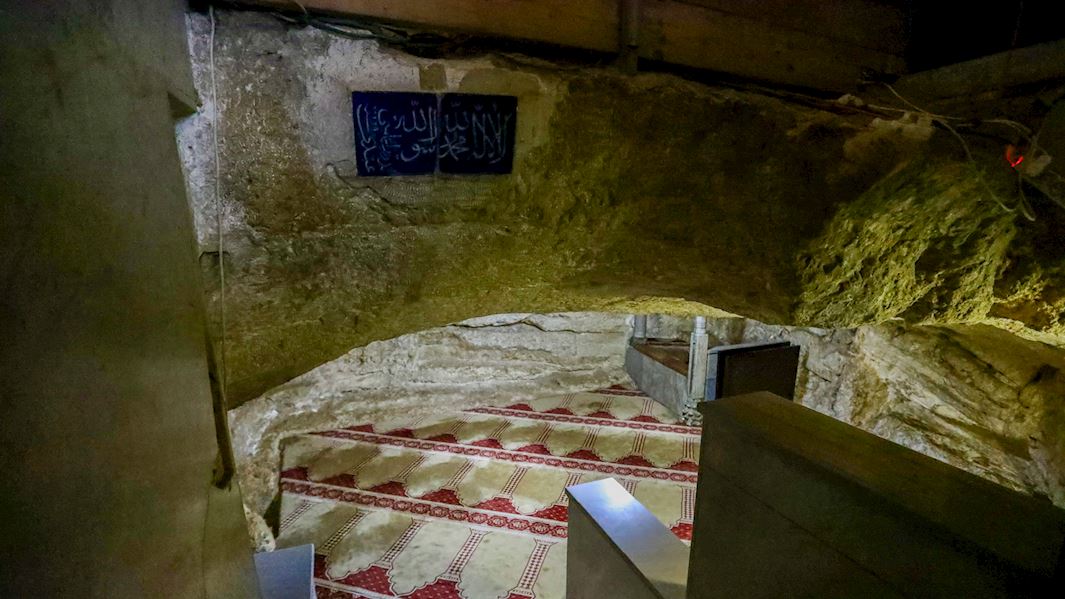
Finally, the Prophet (saw) was taken back down to the Blessed Masjid Al-Aqsa and returned to Makkah on the Buraq.
As he was transported home, he saw various caravans heading towards Makkah, which he would later describe to the Quraish as proof that he really had made this miraculous journey. Allah even displayed Bait al-Maqdis to the Prophet (saw), while the Quraish were cross-examining him in the Hijr of the Ka‘bah [Bukhari]. The entire journey had taken place in a small portion of a night , and there were many who would mock the Prophet (saw) for making such a claim.
For the Muslims, however, the story was a source of wonder and hope, as it continues to be for us today. On this night, the best of creation (saw) was given the honour of travelling to various blessed places on earth, then ascending the levels of sky and being finally welcomed into the Divine Presence! All this to honour the beloved Prophet (saw) and 'to show him some of Our signs!' [The Noble Qur’an, 17:1]
Before you go…
This year, the 27th night of Rajab - which was divinely chosen for the miraculous Night Journey - will fall on Friday 17th February 2023 , at Maghrib. We have an INCREDIBLE Sadaqah Jariyah opportunity for you on this significant anniversary!
We’re illuminating the Dome of the Rock Masjid! Sitting majestically at the centre of the Blessed Masjid Al-Aqsa complex, it is believed to be the exact site where the Prophet (saw) was ascended into the heavens on Al-Isra wal-Mi’raj!
SubhanAllah, gifting light to Masjid Al-Aqsa - which includes the Dome of the Rock Masjid - carries the reward of praying there - worth 1,000 prayers!
This hadith shows the wisdom of the Prophet (saw) and the generosity of Allah! Obviously, not all Muslims will be able to pray in Masjid Al-Aqsa, not just because of the difficulties and cost of travel, but also because of various conflicts that have occurred around it throughout history. However, we have been granted a beautiful way to gain the same reward as praying there - sending some oil to light its lamps!
The modern equivalent of this is, of course, contributing to the cost of its electric lighting. And Allah has granted us the opportunity to illuminate the Dome of the Rock Masjid , alhamdulillah!
You can give this beautiful Sadaqah Jariyah on behalf of yourself or a loved one. We urge you not to miss out on this chance to serve the site of Al-Isra wal-Mi’raj!
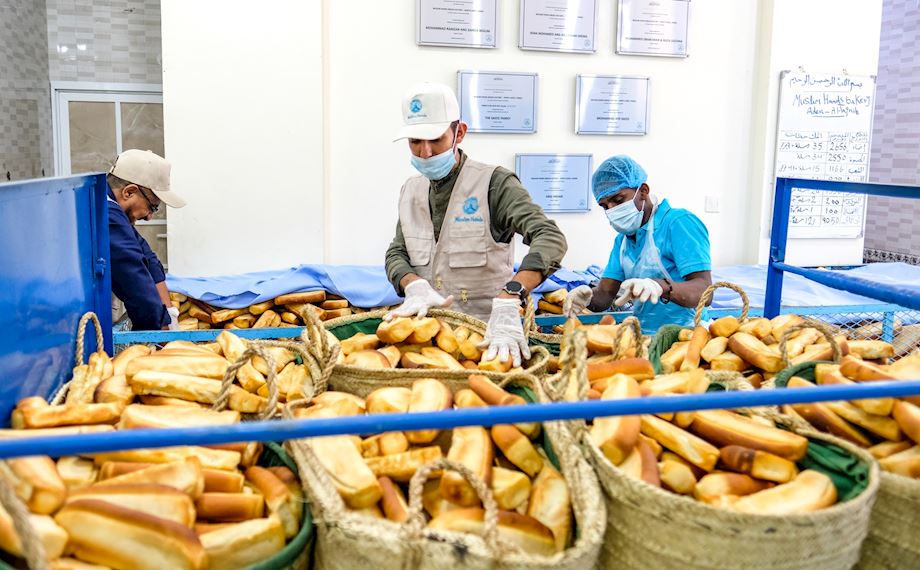
Blessed Bakeries: Bread for Syria & Yemen
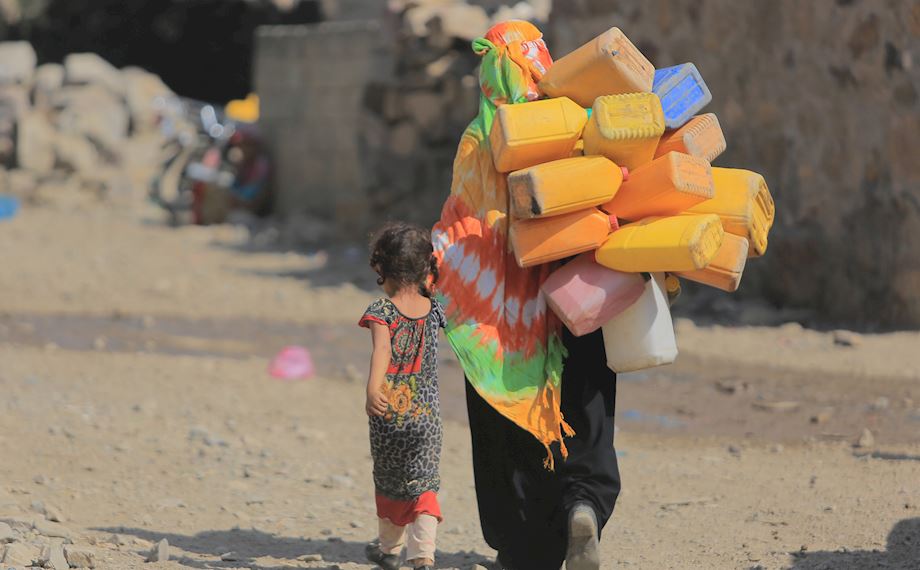
Yemen Water Fund
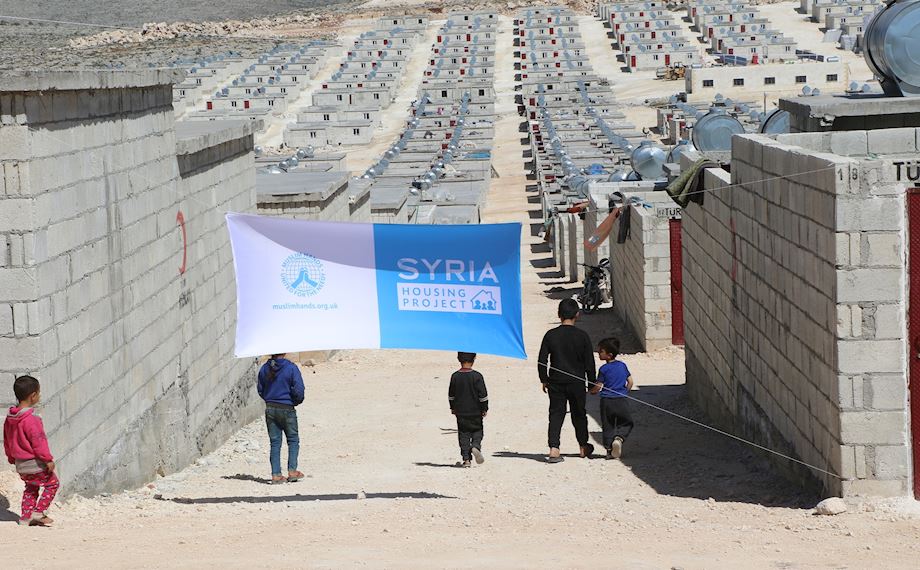
Syria Family Homes Fund

07 April 2024
Walk for the Children of War
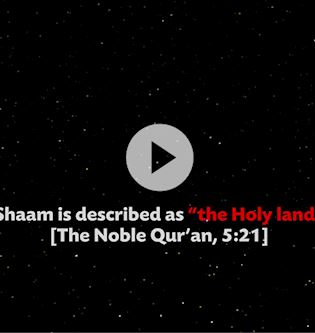
05 April 2024
Divine Connections Between the Blessed Lands
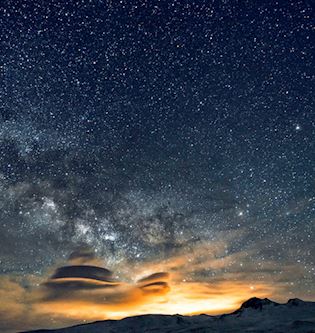
29 March 2024
Your Guide to Worship During the Last 10 Nights of Ramadan

28 March 2024
Virtues of the last 10 Nights of Ramadan
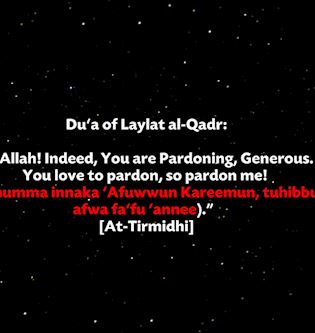
Virtues of Yemen
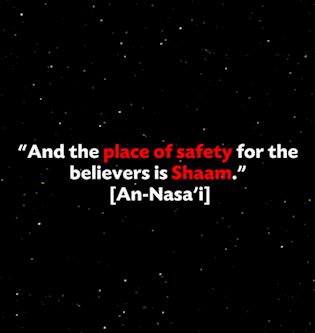
Virtues of Gaza
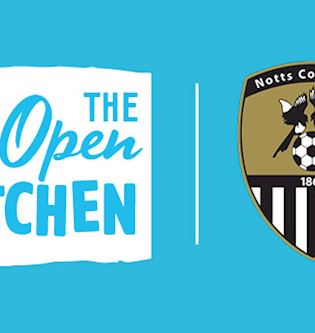
21 March 2024
Press Release: Meadow Lane to host Open Iftar with Nottingham charity Muslim Hands
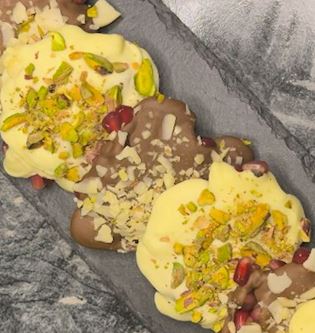
14 March 2024
Sunnah Recipes: Pomegranate Bark

Established in 1993, Muslim Hands is an aid agency and NGO helping those affected by poverty, conflict and natural disaster in over 20 countries worldwide.
- Subscriber Services
- For Authors
- Publications
- Archaeology
- Art & Architecture
- Bilingual dictionaries
- Classical studies
- Encyclopedias
- English Dictionaries and Thesauri
- Language reference
- Linguistics
- Media studies
- Medicine and health
- Names studies
- Performing arts
- Science and technology
- Social sciences
- Society and culture
- Overview Pages
- Subject Reference
- English Dictionaries
- Bilingual Dictionaries
Recently viewed (0)
- Save Search
- Share This Facebook LinkedIn Twitter
Related Content
Related overviews.
Muhammad (c. 570—632)
See all related overviews in Oxford Reference »
'Night Journey' can also refer to...
Night journey, more like this.
Show all results sharing this subject:
Quick Reference
Also known as al-Isra and Laylat al-Miraj. Refers to the journey made by Muhammad from the Great Mosque in Mecca to the Temple Mount in Jerusalem on a winged horselike creature known as Buraq, followed by Muhammad's ascension into heaven. Briefly mentioned in the Quran (17:1) but known primarily through hadith. During the journey, Muhammad traveled with Gabriel to see everything in heaven and earth and then to the Temple in Jerusalem, where he met with Abraham, Moses, Jesus, and other prophets there and led them in prayer. Then Muhammad was shown a ladder, which he climbed with Gabriel up to the Gate of Watchers in heaven, where he met Jesus, John the Baptist, Joseph, Idris, Aaron, Moses, and Abraham. Muslims debate whether this journey was physical or mystical in nature. The result of the journey was the reduction of daily prayers to five from fifty after lengthy debate with Moses. Muhammad argued that fifty prayers per day would represent too great a hardship for believers. Daily prayers were instituted after this event. The Night Journey made Jerusalem the third holiest city in Islam and affirmed the continuity of Islam with Judaism and Christianity. It is celebrated annually on the twenty-seventh of Rajab and is a popular theme for Islamic artwork and legends.
From: Night Journey in The Oxford Dictionary of Islam »
Subjects: Religion
Related content in Oxford Reference
Reference entries, night journey of muhammad.
View all related items in Oxford Reference »
Search for: 'Night Journey' in Oxford Reference »
- Oxford University Press
PRINTED FROM OXFORD REFERENCE (www.oxfordreference.com). (c) Copyright Oxford University Press, 2023. All Rights Reserved. Under the terms of the licence agreement, an individual user may print out a PDF of a single entry from a reference work in OR for personal use (for details see Privacy Policy and Legal Notice ).
date: 24 April 2024
- Cookie Policy
- Privacy Policy
- Legal Notice
- Accessibility
- [66.249.64.20|185.148.24.167]
- 185.148.24.167
Character limit 500 /500
- Evidence Islam is Truth
- The Benefits of Islam
- Beliefs of Islam
- How to Convert to Islam
- Worship and Practice
- The Hereafter
- Stories of New Muslims
- Comparative Religion
- The Holy Quran
- The Prophet Muhammad
- Current Issues
- Islamic History
- Systems in Islam
Evidence Islam is Truth 159 articles
- The Scientific Miracles of the Holy Quran 15 articles
- The Scientific Miracles of the Prophet Muhammad Sayings 2 articles
- Muhammad in the Bible and Other Scriptures 4 articles
- The Authenticity and Preservation of the Holy Quran 21 articles
- Evidence of Muhammad’s Prophethood 29 articles
- Logical Proofs 45 articles
- The Existence of God 62 articles
The Benefits of Islam 62 articles
- The Door to Eternal Paradise 3 articles
- Salvation from Hellfire 1 articles
- True Happiness and Inner Peace 28 articles
- Forgiveness for All Previous Sins 1 articles
- Benefits to Society 15 articles
- Benefits to Science and Civilization 7 articles
- What Others Say about Islam, Muhammad, and the Quran 7 articles
Beliefs of Islam 211 articles
- What is Islam 21 articles
- The Six Pillars of Faith and Other Islamic Beliefs 49 articles
- About God 63 articles
- The Purpose of Life 22 articles
- Stories of the Prophets 64 articles
How to Convert to Islam 13 articles
- How to Convert to Islam and Become a Muslim 13 articles
Worship and Practice 115 articles
- The Five Pillars of Islam and Other Acts of Worship 49 articles
- Islamic Morals and Practices 66 articles
The Hereafter 35 articles
- Paradise 8 articles
- Hellfire 9 articles
- The Journey after Death 12 articles
- The Day of Judgement and Its Signs 9 articles
Stories of New Muslims 277 articles
- Men 98 articles
- Women 132 articles
- Priests and Religious Figures 20 articles
- Personalities 32 articles
Comparative Religion 160 articles
- Jesus 59 articles
- The Bible 21 articles
- Christianity 26 articles
- Mary 10 articles
- Judaism 20 articles
- Hinduism 5 articles
- Buddhism 2 articles
- Sikhism 2 articles
- Scientology 2 articles
- Tolerance in Islam 6 articles
- Uncommon Faiths 17 articles
The Holy Quran 234 articles
- The Authenticity and Preservation of the Holy Quran 26 articles
- Structure and Attributes of the Quran 17 articles
- Selected Topics from the Quran 25 articles
- A Summary of the Quranic Chapters 123 articles
- Essential Verses in the Quran 28 articles
The Prophet Muhammad 124 articles
- Pearls from His Sayings 19 articles
- His Characteristics 22 articles
- His Biography 19 articles
- Evidence of His Prophethood 29 articles
- About His Sayings 15 articles
- Stories of His Companions 22 articles
Current Issues 92 articles
- Human Rights 14 articles
- Jihad and Terrorism 2 articles
- Women 39 articles
- Islam and Non-Muslims 23 articles
- Sects Attributed to Islam 14 articles
Islamic History 25 articles
- In Brief 15 articles
- In Detail 10 articles
Systems in Islam 77 articles
- Family 18 articles
- Politics 3 articles
- Economy 11 articles
- Justice 6 articles
- Crime and Punishment 7 articles
- Health and Nutrition 19 articles
- The Environment 13 articles
- Islamic Songs (Nasheed)
- New Muslims
- Short Videos About Islam
Evidence Islam is Truth 122 videos
- The Scientific Miracles of the Holy Quran 17 videos
- The Scientific Miracles of the Prophet Muhammad Sayings 2 videos
- Muhammad in the Bible and Other Scriptures 2 videos
- The Authenticity and Preservation of the Holy Quran 25 videos
- Evidence of Muhammad’s Prophethood 6 videos
- Logical Proofs 33 videos
- The Existence of God 38 videos
The Benefits of Islam 102 videos
- The Door to Eternal Paradise 3 videos
- Salvation from Hellfire 6 videos
- True Happiness and Inner Peace 36 videos
- Benefits to Society 39 videos
- Benefits to Science and Civilization 13 videos
- What Others Say about Islam, Muhammad, and the Quran 6 videos
Beliefs of Islam 176 videos
- What is Islam 43 videos
- The Six Pillars of Faith and Other Islamic Beliefs 37 videos
- About God 53 videos
- The Purpose of Life 24 videos
- Stories of the Prophets 15 videos
How to Convert to Islam 8 videos
- How to Convert to Islam and Become a Muslim 8 videos
Worship and Practice 16 videos
- The Five Pillars of Islam and Other Acts of Worship 7 videos
- Islamic Morals and Practices 8 videos
The Hereafter 17 videos
- Paradise 3 videos
- Hellfire 2 videos
- The Journey after Death 5 videos
- The Day of Judgement and Its Signs 8 videos
Stories of New Muslims 235 videos
- Men 180 videos
- Women 34 videos
- Priests and Religious Figures 5 videos
- Personalities 18 videos
Comparative Religion 123 videos
- Jesus 65 videos
- The Bible 20 videos
- Christianity 27 videos
- Mary 2 videos
- Judaism 6 videos
- Tolerance in Islam 9 videos
The Holy Quran 51 videos
- The Scientific Miracles of the Holy Quran 9 videos
- The Authenticity and Preservation of the Holy Quran 31 videos
- Jewels from the Quran 7 videos
- A Summary of the Meanings of Its Verses 1 videos
The Prophet Muhammad 71 videos
- Pearls from His Sayings 2 videos
- His Characteristics 32 videos
- His Biography 21 videos
- Evidence of His Prophethood 9 videos
- About His Sayings 1 videos
- Stories of His Companions 5 videos
Current Issues 64 videos
- Human Rights 14 videos
- Jihad and Terrorism 30 videos
- Women 20 videos
- Islam and Non-Muslims 10 videos
Islamic History 21 videos
- In Brief 3 videos
- In Detail 18 videos

Systems in Islam 25 videos
- Family 4 videos
- Politics 1 videos
- Economy 2 videos
- Justice 13 videos
- Crime and Punishment 2 videos
- Health and Nutrition 3 videos
Islamic Songs (Nasheed) 14 videos
- NBN Band 1 videos
- Zain Bhikha 1 videos
- Ahmad Bukhatir 2 videos
- Yusuf Islam (Cat Stevens) 2 videos
- Kamal Uddin 2 videos
- Labbayk 1 videos
- TalkIslam 2 videos
New Muslims 148 videos
- Merits of Islam 8 videos
- Islamic Beliefs 11 videos
- Acts of Worship 27 videos
- Islamic Lifestyle, Morals and Practices 23 videos
- The Holy Quran 11 videos
- Prophet Muhammad 32 videos
- Social Interaction 22 videos
- Increasing faith 23 videos
Short Videos About Islam 26 videos
- Islam in 3 Minutes 18 videos
- Understanding Islam By Yusuf Estes 8 videos
Islam at a Glance
- Intro E-books
- Evidence of His Prophethood
The Night Journey and the Ascension (part 3 of 6): The Ascension
Description: the prophet muhammad’s journey through the heavens..
- By Aisha Stacey (© 2008 IslamReligion.com)
- Published on 09 Jun 2008
- Last modified on 13 Jul 2008
- Printed: 1,464
- Viewed: 146,834 (daily average: 25)
- Rating: 2.2 out of 5
- Rated by: 69
- Commented on: 2
_001.jpg)
In the English language, we generally use the word heaven to mean the spiritual plane of eternal happiness, the reward for a righteous life and the opposite of hell, the place of eternal punishment. However, this was not always the case; the word heaven comes from the Old English word heofon, [1] used to denote the sky, which is the area above the earth where the celestial bodies are. Eventually, heaven lost its original meaning and came to imply Paradise. In Arabic, however, there have always been two separate words used, sama and jennah . The word sama is used for the skies above us, and they are part of the temporary world which will be destroyed on the Day of Judgement. The word jennah , however, denotes Paradise, the land of eternal bliss, the permanent home of the righteous believers, and the opposite of Hell.
“Then He completed and finished from their creation as seven heavens in two Days and He made in each heaven its affair. And We adorned the nearest heaven with light sources to be an adornment, as well as to guard. Such is the Decree of Him the All-Mighty, the All-Knower.” (Quran 41:12)
“Their Lord gives them glad tidings of a Mercy from Him, and that He is pleased, and of Gardens ( jennah ) for them wherein are everlasting delights. They will dwell therein forever. Verily, with God is a great reward.” (Quran 9:21-22)
The Wonders of God
Prophet Muhammad ascended into the heavens from the rock now housed in the familiar golden dome that has become the symbol for Jerusalem. This is a journey that no other human had ever made or has made since. It demonstrates God’s ability to bring the seemingly impossible into being. Here, the concepts of time and space as we know them do not apply, and it is beyond our human capabilities to understand the true omnipotence of God. In his sayings and traditions, Prophet Muhammad described the size of the heavens; the first heaven, as compared to the second, is similar to a small ring in the desert, and he continued this narrative until he described the sixth heaven as being the size of a ring in the desert compared to the seventh heaven. The magnitude of this is unimaginable. Our earth, and what we call the universe, is contained within the first heaven. Even with the scientific knowledge of the 21 st century, we have no idea how big this is, how far the universe extends, or what wonders it contains.
Prophet Muhammad travelled with the Angel Gabriel up into the heights of the heavens. Together they came to the gate of the first heaven, where Angel Gabriel sought permission to enter. The gatekeepers asked, “Who is it?” to which Gabriel replied, “It is I, Gabriel”. The gatekeepers then asked who was accompanying him; when they were told it was Muhammad, they asked if he had been given his mission to guide all of mankind to the worship of One God. Angel Gabriel answered in the affirmative, so the angels welcomed Prophet Muhammad, called his arrival a pleasure, and opened the gate.
Greeting the Prophets
Prophet Muhammad tells us that he saw his father Adam, the father of all of mankind. He greeted him with the greeting of all Muslims, - Assalamu alaikum (may peace be upon you). Adam returned the greeting and expressed his faith in Muhammad’s prophethood. He called him his pure son, the pure prophet. Imagine the pleasure that this meeting must have given to both men. After thousands of years, Adam was able to see his son Muhammad, the greatest of his descendents. Muhammad was able to look into the eyes of the father of mankind. The wonders however were only just beginning. Angel Gabriel and Prophet Muhammad then ascended to the second heaven.
At the gate, Angel Gabriel again sought permission to enter. When the gatekeepers learned Prophet Muhammad had been given his mission and was trying to enter, they welcomed him and opened the gate. There Prophet Muhammad saw the two cousins, Prophet John (known in Christian traditions as the Baptist ) and the Messenger of God, Prophet Jesus; Prophet Muhammad exchanged greetings with them.
Prophet Muhammad and Angel Gabriel ascended once more to the gates of the third heaven. At each gate, the same exchange took place. When the gatekeepers had established that it was Angel Gabriel in the company of Prophet Muhammad, who had indeed been given his mission, they gave permission to enter. Here, in the third heaven, Prophet Muhammad met Joseph and described him as an embodiment of half of all beauty.
As Prophet Muhammad met the Prophets in each heaven, he exchanged greetings with them, and this was always Assalamu alaikum, the greeting of peace used by all those in submission to the One True God. In the fourth heaven, Prophet Muhammad met Prophet Idris, whom God described in Quran (19:57) as being elevated to a very high level. In the fifth heaven, he met Prophet Aaron, the brother of Moses. At each meeting, the Prophets expressed their faith in Muhammad’s prophethood. In the sixth heaven, Prophet Muhammad met Moses.
Whenever Prophet Moses is mentioned in the Quran or in the narrations of Prophet Muhammad, we know that something important is about to be described. After the two Prophets had exchanged greetings and Prophet Moses had expressed his faith in Muhammad’s prophethood, Moses started to weep. When he was asked why, he replied: “A young man has come after me, and more of his followers will enter paradise then my followers”.
Until the advent of Islam, Prophet Moses had had the largest following of any Prophet. Moses cried, and from this, we can understand that there was a type of rivalry between the Prophets; but it was not a competition filled with jealousy or envy. Rather, it was filled with compassion. As we move further into the journey, we will see the love and compassion Prophet Moses had for Muhammad and his followers. Prophet Muhammad and Angel Gabriel then ascended into the seventh heaven.
[1] Webster’s Online dictionary.
Parts of This Article
Add a comment
- Country: Select Country Afghanistan Albania Antarctica Algeria American Samoa Andorra Angola Antigua and Barbuda Azerbaijan Argentina Australia Austria Bahamas Bahrain Bangladesh Armenia Barbados Belgium Bermuda Bhutan Bolivia, Plurinational State of Bosnia and Herzegovina Botswana Bouvet Island Brazil Belize British Indian Ocean Territory Solomon Islands Virgin Islands, British Brunei Darussalam Bulgaria Myanmar Burundi Belarus Cambodia Cameroon Canada Cape Verde Cayman Islands Central African Republic Sri Lanka Chad Chile China Taiwan, Province of China Christmas Island Cocos (Keeling) Islands Colombia Comoros Mayotte Congo Congo, the Democratic Republic of the Cook Islands Costa Rica Croatia Cuba Cyprus Czechia Benin Denmark Dominica Dominican Republic Ecuador El Salvador Equatorial Guinea Ethiopia Eritrea Estonia Faroe Islands Falkland Islands (Malvinas) South Georgia and the South Sandwich Islands Fiji Finland Åland Islands France French Guiana French Polynesia French Southern Territories Djibouti Gabon Georgia Gambia Palestine Germany Ghana Gibraltar Kiribati Greece Greenland Grenada Guadeloupe Guam Guatemala Guinea Guyana Haiti Heard Island and McDonald Islands Holy See (Vatican City State) Honduras Hong Kong Hungary Iceland India Indonesia Iran, Islamic Republic of Iraq Ireland Israel Italy Côte d'Ivoire Jamaica Japan Kazakhstan Jordan Kenya Korea, Democratic People's Republic of Korea, Republic of Kuwait Kyrgyzstan Lao People's Democratic Republic Lebanon Lesotho Latvia Liberia Libya Liechtenstein Lithuania Luxembourg Macao Madagascar Malawi Malaysia Maldives Mali Malta Martinique Mauritania Mauritius Mexico Monaco Mongolia Moldova, Republic of Montenegro Montserrat Morocco Mozambique Oman Namibia Nauru Nepal Netherlands Curaçao Aruba Sint Maarten (Dutch part) Bonaire, Sint Eustatius and Saba New Caledonia Vanuatu New Zealand Nicaragua Niger Nigeria Niue Norfolk Island Norway Northern Mariana Islands United States Minor Outlying Islands Micronesia, Federated States of Marshall Islands Palau Pakistan Panama Papua New Guinea Paraguay Peru Philippines Pitcairn Poland Portugal Guinea-Bissau Timor-Leste Puerto Rico Qatar Réunion Romania Russian Federation Rwanda Saint Barthélemy Saint Helena, Ascension and Tristan da Cunha Saint Kitts and Nevis Anguilla Saint Lucia Saint Martin (French part) Saint Pierre and Miquelon Saint Vincent and the Grenadines San Marino Sao Tome and Principe Saudi Arabia Senegal Serbia Seychelles Sierra Leone Singapore Slovakia Viet Nam Slovenia Somalia South Africa Zimbabwe Spain South Sudan Sudan Western Sahara Suriname Svalbard and Jan Mayen Eswatini Sweden Switzerland Syrian Arab Republic Tajikistan Thailand Togo Tokelau Tonga Trinidad and Tobago United Arab Emirates Tunisia Turkey Turkmenistan Turks and Caicos Islands Tuvalu Uganda Ukraine North Macedonia Egypt United Kingdom Guernsey Jersey Isle of Man Tanzania, United Republic of United States Virgin Islands, U.S. Burkina Faso Uruguay Uzbekistan Venezuela, Bolivarian Republic of Wallis and Futuna Samoa Yemen Zambia
(Not shown to the public)
Your comment will be reviewed and should be published within 24 hours.
Fields marked with an asterisk (*) are required.
Other Articles in the Same Category
Other videos in the same category.

Article Categories
Video categories, most viewed, editor’s pick, list contents, most popular, your favorites.
Your favorites list is empty. You may add articles to this list using the article tools.
Your History
Your history list is empty.
Retrieve Your Password
Forgot your password? No problem. Just let us know your email address and we will email you a password reset link that will allow you to choose a new one.
Registration
Why register? This web site has several customizations made specifically for you, such as: your favorites, your history, marking articles you have previously viewed, listing articles published since your last visit, changing font size, and more. These features are based on cookies and will work correctly only when you use the same computer. To enable these features from any computer, you should login while browsing this site.
The field(s) below are optional

The Prophet Muhammad and the Origins of Islam
The rise of Islam is intrinsically linked with the Prophet Muhammad, believed by Muslims to be the last in a long line of prophets that includes Moses and Jesus. Because Muhammad was the chosen recipient and messenger of the word of God through the divine revelations, Muslims from all walks of life strive to follow his example. After the holy Qur'an, the sayings of the Prophet ( hadith ) and descriptions of his way of life ( sunna ) are the most important Muslim texts.
Early Life Muhammad was born into the most powerful tribe in Mecca, the Quraish, around 570 A.D. The power of the Quraish derived from their role as successful merchants. Several trade routes intersected at Mecca, allowing the Quraish to control trade along the west coast of Arabia, north to Syria, and south to Yemen.
Mecca was home to two widely venerated polytheistic cults whose gods were thought to protect its lucrative trade. After working for several years as a merchant, Muhammad was hired by Khadija, a wealthy widow, to ensure the safe passage of her caravans to Syria. They eventually married.
Divine Revelations When he was roughly forty, Muhammad began having visions and hearing voices. Searching for clarity, he would sometimes meditate at Mount Hira, near Mecca. On one of these occasions, the Archangel Gabriel ( Jibra'il in Arabic) appeared to him and instructed him to recite "in the name of [your] lord." This was the first of many revelations that became the basis of the Qur'an, the holy book of Islam. These early revelations pointed to the existence of a single God, contradicting the polytheistic beliefs of the pre-Islamic Arabian Peninsula.
Initially overwhelmed by the significance of what was being revealed to him, Muhammad found unflinching support in his wife and slowly began to attract followers. His strong monotheistic message angered many of the Meccan merchants. They were afraid that trade, which they believed was protected by the pagan gods, would suffer. From that point forward, Muhammad was ostracized in Mecca. For a time, the influence and status of his wife and his uncle, Abu Talib, the chief of the clan, protected Muhammad from persecution. After they died, however, Muhammad's situation in Mecca became dire.
The Hijra Emigration became the only hope for Muhammad and his followers' survival. In 622, they headed to Medina, another oasis town, where they were promised freedom to practice their religion. The move from Mecca to Medina is known as the hijra —the flight—and marks year 1 of the Islamic, or hijri , calendar.
Spreading the Message of Islam In Medina, Muhammad continued to receive divine revelations and built an ever-expanding community around the new faith. The conflict with the Quraish continued, but after several years of violent clashes, Mecca surrendered. Muhammad and his followers soon returned and took over the city, destroying all its pagan idols and spreading their belief in one God.
The Night Journey and Ascension of the Prophet Accounts of the ascension ( mi'raj ) of Muhammad have captured the imaginations of writers and painters for centuries. One night, while the Prophet was sleeping, the Archangel Gabriel came and led him on a journey. Mounted on the heavenly steed Buraq , Muhammad traveled from the Ka'ba in Mecca to the "Farthest Mosque," which Muslims believe to be the Al-Aqsa Mosque in Jerusalem. There he prayed with other prophets such as Moses, Abraham, and Jesus, and ascended to the skies, where he was led by Gabriel through Paradise and Hell, and finally came face to face with God. He then returned to earth to continue spreading the message of Islam. According to Islamic belief, Muhammad was the only person to see Heaven and Hell while still alive.
After the Prophet's Death: Emergence of Shi'i and Sunni Sects of Islam When Muhammad died in 632, he had not named a successor. One faction, the Shi'a, believed that only individuals with direct lineage to the Prophet could guide the Muslim community righteously. They thought that 'Ali, Muhammad's closest surviving blood male relative, should be their next leader ( caliph ). The other faction, the Sunnis, believed that the Prophet's successor should be determined by consensus and successively elected three of his most trusted companions, commonly referred to as the Rightly Guided Caliphs (Abu Bakr, 'Umar, and 'Uthman), as leaders of the Muslim community; 'Ali succeeded them as the fourth caliph.
Today the Islamic community remains divided into Sunni and Shi'i branches. Sunnis revere all four caliphs, while Shi'is regard 'Ali as the first spiritual leader. The rift between these two factions has resulted in differences in worship as well as political and religious views. Sunnis are in the majority and occupy most of the Muslim world, while Shi'i populations are concentrated in Iran and Iraq, with sizeable numbers in Bahrain, Lebanon, Kuwait, Turkey, Pakistan, and Afghanistan.
Depictions of the Prophet Muhammad Featured in this unit are several depictions of the Prophet Muhammad. These portrayals, while somewhat rare, are not unheard of as there were (and still are) many different attitudes toward depicting the Prophet, and humans in general, in the Islamic world. These attitudes varied dramatically from region to region and throughout history; the societies that produced the works discussed here are among those that allowed the depiction of the Prophet. Commissioned by Muslims for Muslims, these images appear in biographies of the Prophet and his family, world and local histories, and accounts of Muhammad's celestial journey ( mi'raj ), as well as in literary texts. In each context, they serve a distinct purpose. They illustrate a narrative in biographies and histories, while in literary texts they serve as visual analogues to written praises of the Prophet. An image of the Prophet Muhammad at the beginning of a book endows the volume with the highest form of blessing and sanctity. Thus, illustration of him was a common practice, particularly in the eastern regions of the Islamic world (see also Frequently Asked Questions ).
Your Collection
Log in to the harvard art museums, 2002.50.3: the prophet muhammad’s ascent to heaven (painting, verso; text, recto), folio from a manuscript of the khamsa (layla and majnun) by nizami.
- Add to Collection
- copy = 'Copy Permanent URL', 2000)" data-behavior="tooltip"> Copy Link
- Reuse via IIIF
- $focus.focus($refs.osd_viewer), 250)};" x-tooltip.raw="Toggle Deep Zoom Mode" data-behavior="tooltip" target="_blank" > Toggle Deep Zoom Mode
Identification and Creation
Physical descriptions, acquisition and rights.
The Harvard Art Museums encourage the use of images found on this website for personal, noncommercial use, including educational and scholarly purposes. To request a higher resolution file of this image, please submit an online request.
Descriptions
Published Catalogue Text: In Harmony: The Norma Jean Calderwood Collection of Islamic Art , written 2013 107 The Prophet’s Ascent, from Laylā va Majnūn Recto: text and illustration Verso: text Folio: 40.2 × 26.5 cm (15 13/16 × 10 7/16 in.) 2002.50.3 Published: Christie’s 1994a, lot 26; McWilliams, 2004, 9, fig.12; Raguin and Bangdel 2010, 290, fig. 1. The story of the miraculous night journey of the Prophet Muhammad is based on passages from the Qurʾan (17:1, 53:1–18, and 81:19–25), as well as later hadith that describe his travel (isrāʾ ) from “the holy mosque” to “the farthest mosque” as well as his ascent to heaven (miʿrāj) and what he experienced there. Paintings of this wondrous event sometimes appear in illustrated manuscripts of Persian epic and romantic poetry, such as the Khamsa of Nizami, even though they are not directly related to the stories told in these works. In this illustration, the Prophet is shown in mid-journey, riding his human-headed steed, Buraq. Rainbow-winged angels hover around him and proffer golden vessels. Among them is Archangel Gabriel: holding a banner of green, the color associated with the Prophet, he leads Muhammad on his mystical journey. Although earlier depictions of the Prophet reveal his face, here he is shown veiled, in accord with iconography adopted at the beginning of the Safavid period, in the early 1500s.[1] Mika M. Natif [1] Gruber 2009a.
Publication History
- Mary McWilliams, Closely Focused, Intensely Felt: Selections from the Norma Jean Calderwood Collection of Islamic Art , brochure, Harvard University Art Museums (Cambridge, MA, 2004)
- Virginia Raguin, Dina Bangdel, and F.E. Peters, ed., Pilgrimage and Faith: Buddhism, Christianity, and Islam , exh. cat., Iris and B. Gerald Cantor Gallery, College of the Holy Cross and Serindia Publications Inc. (Worcester, MA, 2010), p. 290, fig. 1
- Mary McWilliams, ed., In Harmony: The Norma Jean Calderwood Collection of Islamic Art , exh. cat., Harvard Art Museums (Cambridge, MA, 2013), pp. 163-165, ill.; p. 245, cat. 107, ill.
- Christiane Gruber, ed., The Moon: A Voyage through Time , exh. cat., The Aga Khan Museum (Toronto, 2019), pp. 102-103, no. 13
- Leyli et Majnûn de Jâmi: Illustré par les Miniatures d'Orient , Editions Diane de Selliers (Paris, 2021), pp. 52-53, ill.
Exhibition History
- Closely Focused, Intensely Felt: Selections from the Norma Jean Calderwood Collection of Islamic Art , Harvard University Art Museums, Cambridge, 08/07/2004 - 01/02/2005
- Pilgrimage and Faith: Christianity, Buddhism, and Islam , Rubin Museum of Art, New York, 07/01/2011 - 10/24/2011
- In Harmony: The Norma Jean Calderwood Collection of Islamic Art , Harvard Art Museums, Cambridge, 01/31/2013 - 06/01/2013
- The Moon: Spirit, Art, and Wonder , The Aga Khan Museum, Toronto, 03/09/2019 - 08/18/2019
Subjects and Contexts
- Google Art Project
- Collection Highlights
Verification Level
This record has been reviewed by the curatorial staff but may be incomplete. Our records are frequently revised and enhanced. For more information please contact the Division of Asian and Mediterranean Art at [email protected]
- About the blog
- About the book
- Introduction
- Table of Contents
- List of Illustrations
- Chapter 16: Murder, Inc.
- Depictions of Muhammad
- NEW: The Imam of Time
It's All About Muhammad
A blog and a book about why muslims do what they do.
- Breaking News
- News You Can Use
- Related News
Recent Posts:
» Was Muhammad insane?
» How to bring an end to Islam
» Newsflash: Muhammad found dead in bunker after allies storm Medina stronghold
» Muhammad and sex slavery
» Obama and the Muslim gang sign
» Muhammad and the made men of Allah
» Iran and the holy warrior trap
» The Cube of Mecca, aka the Kabah
Get the book

"If it were in my power, I would require every American to read It’s All About Muhammad. " -- Alan Caruba
NOW ON AMAZON!

IN THIS POWERFUL time travel fantasy, an Iranian sickened by the injustices he sees all around him wishes he could experience the true Islam of Muhammad and his cousin Ali, whom Iranians consider the forefather of Shia Islam. Author F.W. Burleigh gives the protagonist his wish and sends him to 7th century Arabia, first as a slave and then as Muhammad’s scribe. After witnessing Islam’s founder commit a series of horrific atrocities, he loses his faith and becomes a warner of what is to come out of Arabia. He is trapped in Mecca at the time of Muhammad's invasion and is about to be beheaded when he returns to present day Iran in such a way that shows he is the Mahdi—the long-awaited Imam of Time. But what he has to say to his contemporaries brings the rage of Iran’s clerical rulers down on him.
CLICK HERE FOR THE AMAZON PAGE!
Winging it — The myth of Muhammad in heaven

You have to give credit where credit is due, so it is important to recognize that Muhammad was a creative genius. He was psychopathic, epileptic, murderous, and thieving, but he also possessed a creative genius and was brilliant in his ability to draw people into his mental world and make it seem real. Read the story about his dream of being taken into heaven. This story is taken from It’s All About Muhammad, A Biography of the World’s Most Notorious Prophet. Muslims actually believe what follows:
MUHAMMAD’S TEMPORAL LOBE EXPLODED ONE NIGHT WHILE HE WAS staying at the home of Abu Talib’s daughter Umm Hani, resulting in an epileptic hallucination or lucid dream that he was taken into Heaven by the Angel Gabriel. Muhammad called it “The Night Journey,” and during this experience he believed he was introduced to the heroes of the Jewish prophet legends and brought before the throne of God.
Muhammad’s imagination transformed this neural event into a convoluted and richly entertaining tale worthy of One Thousand and One Nights . The basic story is straightforward: As in an alien abduction scenario, entities extracted him from Umm Hani’s house through a dissolving roof and brought him to a well next to the temple where he was handed over to the Angel Gabriel. The angel of the Lord sliced him open from throat to groin, cleansed his intestines and heart with water and stitched him back up—a repeat of his experience while in Halima’s care. This time it was a special cleansing, the ultimate ablution, for he was about to be brought before God Almighty via Jerusalem. He was flown on the back of a winged animal a thousand miles over mountains, valleys, and wind-whipped desert to the Temple Mount of Jerusalem. From there he ascended with Gabriel to the various levels of Heaven, each level being the abode of one of the prophets. Reaching the top of the heavens, he was brought before the throne of God. At the end of the experience, Muhammad was back in bed at the house of Umm Hani.[1]

The German Liebig Company used Muhammad’s ascent into heaven story to sell its meat paste products, but used a horse instead of a donkey with a human face.
When he told her what happened to him, she begged him not to tell anyone about it, but convinced he had actually gone to Jerusalem and had been summoned before God, he was unable to keep his mouth shut. It is said that she grabbed at his garment in an attempt to keep him from going out the door, but he pulled away from her. Predictably, the Meccans scoffed and made fun of him. Some of his followers abandoned him. Most, however, remained loyal and agreed with Abu Bakr, who declared, “If he said it, he spoke the truth.”[2]
As word spread that Muhammad had been brought before the throne of God, the true believers were ecstatic and were dying to hear about it. Muhammad gathered them at the house of Arqam. His listeners were horse and camel aficionados, and they wanted to hear first about the fabulous winged mount that had taken him to Jerusalem. Muhammad was a master of magical realism and was perhaps its first practitioner: Buraq was its name, he told them, white was its color—a magnificent animal! In size it was between a mule and a donkey and had enormous wings and a human face; its ears were like those of an elephant; it could travel as far as one could see in a single bound. It was the official mount of the prophets. At one time or another, all his predecessors in the office of prophethood had made use of its transport services. Abraham flew across the endless tracts of desert to pay visits to Ishmael in Mecca, and Ishmael had benefited from its swiftness to attend his father’s funeral in the land of the northern sun.

Danish author Kare Bluitgen wrote a children’s book about Muhammad, The Koran and the life of the Prophet Muhammad , and used an illustration of Muhammad riding Buraq on the front cover.
Now it was Muhammad’s turn to ride Buraq. The heavenly steed appeared before him saddled and ready to ride, but it was highly spirited and in a rebellious mood. Its services had not been needed since the time of Jesus, and it bucked when Muhammad approached, earning a stern rebuke from Gabriel who was holding the reins. “Now Buraq, aren’t you ashamed to do that? I swear, no servant of God more noble than Muhammad has ever ridden you.”[3] Muhammad mounted it, and off they streaked to the famed Temple Mount where he tethered Buraq to a hitching post reserved for the prophets.[4] After he performed two sets of prayer prostrations, Gabriel brought him refreshments to choose from: wine, honey, and milk. Muhammad chose the milk, earning Gabriel’s praise. It was a test. If he had chosen wine, it meant he would lead his followers astray; if he had chosen honey, they would have been seduced by the pleasures of the world. The fact that he had chosen milk showed that under his tutelage as prophet his followers would be rightly guided, set on the narrow but sure path to Paradise.
Like any gifted storyteller, Muhammad could read his audience, and the faces of his listeners showed he had them. They were grown men with full beards and tightly wrapped turbans. Within a few years they would become assassins, mass murderers, plunderers, highwaymen, rapists, enslavers, and destroyers of civilizations as they spread his religion. Yet they sat before him like a group of wide-eyed children listening to fairy tales. He could get away with telling them anything so firmly did they believe in him. They were dazzled by the belief that the man standing in front of them had just come back to Mecca after an audience with God Almighty. They believed his stories because he believed them himself.
Muhammad continued the tale, now with the account of his ascension into Heaven. In one version, he climbed a ladder; in another, Gabriel took him by the hand, and they ascended to the first and lowest level of Heaven where the angel asked permission to enter.[5]
A voice was heard from behind the pearly gate. “Who are you?”
“Who is with you?”
“Muhammad.”
“Has his mission started?”
“His mission has started.”[6]
Following in the footsteps of Gabriel, Muhammad entered Heaven and saw a man seated with a multitude of people on his right and another multitude on his left. When the man looked to his right, he laughed and when he looked to his left, he wept. He had warm words of greeting for Muhammad: “Welcome to the righteous apostle and the righteous son!” Muhammad asked Gabriel who he was, and he replied, “He is Adam and these parties on his right and on his left are the souls of his descendants. Those of them on his right are the inmates of Paradise and the parties which are on his left side are the inmates of Hell.”

Who says you can’t depict Muhammad? Muslims do it. Do they have a monopoly on “depicting” Muhammad?
Armies of angels were bivouacked everywhere. Muhammad learned the identity of their commander: His name was Ismail, and under him were twelve thousand angels, each of whom commanded another twelve thousand angels. All the angels he encountered smiled at him with one exception. This was Malik, the keeper of Hell. When he learned of Malik’s role, Muhammad asked permission to see the place of eternal torment. Reluctantly, Gabriel commanded the grim keeper to show him, whereupon Malik pulled away the covers of Hell and flames blazed high into the air.
Looking sternly at the men seated in front of him, Muhammad held back a beat before telling them what he saw. God had allowed him to see Hell with his own eyes so that he could warn them of what was in store for them if they disobeyed God and his messenger. Were they ready to know the truth? When he saw the fearful nods, Muhammad described the horrors he had witnessed, the torments awaiting the sinful. The torment depends on the sin. With great relish, he described how the fingernails of backbiters and slanderers had been transformed into copper for them to gouge their faces and chests. Thus they were made to suffer as they had made others suffer. “I saw men with lips like camels. In their hands were pieces of fire like stones, which they thrust into their mouths and they would come out of their posteriors. I was told that these were those who sinfully devoured the wealth of orphans.”[7] He had seen the fate of usurers and adulterers and sinners of all stripes and described the tortures specific to their offenses. He had witnessed so much! Would there ever be time enough to tell them the whole of it?

Another Muslim depiction of Muhammad riding Buraq
Muhammad was a masterful speaker, knowing when to raise his voice to a thunder or drop it to a whisper. His eyes would flash with indignation or melt with angelic kindness. Sensing their distress at these hellish descriptions, he deftly brought them back to the heavenly ascent, changing their despair over the possibility of damnation for their wretched sins into hope for their future life—provided, of course, they followed the right guidance of their prophet. If they did, Heaven was theirs for the taking. All they had to do was obey!
Muhammad described how at each level of the heavenly realm the Angel Gabriel asked permission to gain entry. In the second Heaven, he met Jesus and John the Baptist; in the third he was introduced to Joseph. The fourth level was the abode of Enoch. Occupying the fifth level was Aaron, and in the sixth was Moses. After being admitted to their abodes, Muhammad would greet them, and they would reply, “Welcome, O pious brother and pious prophet!” Muhammad described the prophets: Jesus was of medium stature, with a red complexion as if he had just rubbed himself dry after a bath. Joseph had a face that shone like the full moon. Aaron was a dignified man with a flowing white beard. Moses had a white beard too, but he had the athletic build of a young man and had curly hair and a hooked nose. Never above flattery, Muhammad compared the appearance of one his followers to Jesus, eliciting smiles and nods from his audience. Abraham was the easiest to describe because it was like looking into a mirror: “Among his children I have the greatest resemblance with him,” Muhammad declared.
He encountered his hero Abraham in the seventh Heaven. The patriarch was leaning against the temple of God. Again the greeting: “Welcome, O pious brother and pious prophet!” From there, Gabriel escorted him beyond the heavenly temple to the farthest reaches of Paradise, demarked by an enormous tree. At some point, he heard the squeaking of pens, and when he asked about it, he was told the noise was caused by angelic scribes recording the decrees of God. And then Muhammad found himself in the presence of the Creator. God had a command for him: Muhammad and his people were to worship him fifty times a day.
Muhammad’s listeners were stunned. Fifty times! But how would that be possible? They would have to spend the entire day and night in prayer. There was a punch line, and Muhammad withheld it to build up tension. He could not dispute the command of God, he told his audience. Who can argue with the Creator? If God said fifty times, he meant fifty times. Instead of arguing with God, he humbly went back the way he came, but he crossed paths with Moses. Moses asked him, “What orders were you given?”
“I was ordered to pray fifty times each day.”

Buraq on a day off. Either that or she left Muhammad behind.
Moses scoffed. “Your nation can’t manage fifty prayers a day. I swear, I put people to the test before your time. I made some very severe requirements of the people of Israel, but they couldn’t handle it. Return to your Lord and ask him for some relief for your nation.” Muhammad did as Moses recommended. It ended up in as a series of back-and-forth negotiations with God over the frequency of prayer. Muhammad and God finally came to an agreement: Prayers would only be obligatory five times a day, broken down as follows: The faithful were to perform two sets of prostrations at the crack of dawn, four sets during the midday, afternoon, and late night prayer sessions; three sets would suffice for the sunset prayers. But in each and every one of these obligatory prayer sessions, Koran verses—those eternally existing words transmitted to Muhammad via the Angel Gabriel—were to be recited out loud during the first two sets. One can sense the relief among Muhammad’s faithful listeners. God had upped the cost of salvation for them, but Muhammad had reduced it through his superb negotiating skills.
The audience then learned that as a sign of Muhammad’s importance in the divine scheme of things, God had granted him the highest of honors by permitting him to lead the other prophets in prayer. This distinction was accorded to him to signify that he was not only last of the prophets, but the best of them. Muhammad snapped his finger to show how he was instantly transported back to the Temple Mount. The prophets of fame appeared there too and lined up in prayer formation. Muhammad was in the lead position. Jesus, John the Baptist, Moses, Aaron, Enoch, Joseph, and Abraham formed rows behind him. The prophets did not need to be taught anything other than their place as they had already had plenty of time to perfect the same prayer routines that Muhammad had learned only a decade earlier from the Angel Gabriel. Jesus had been at it for six hundred years, whereas Abraham already had more than two thousand years of practice. Yet none of them could match Muhammad in perfection of performance. None could rival the way he cupped his hands to his ears and knelt in the camel position with his hands placed precisely on his thighs; none could match the precision of his elbows that arched outward after he placed the palms of his hands forward for support and touched his forehead to the ground. He was inimitable. He was the matchless Submitter, the archetype of worship. By allowing Muhammad the lead, God ensured that everyone knew of his superiority and set him as the model for everyone to emulate.

Winged creatures with human heads were a common motif in ancient art. As with everything about Muhammad, he did not originate his ideas but took them from other religions and cultures and refashioned them to suit his own purpose.
Prayers over, it was time for Muhammad to go home. His place was in Mecca among his people, among the believers who were now seated or kneeling before him in the house of Arqam. He told them how, wings flapping, Buraq flew him back to Mecca in time for dawn prayer. But on the way back, he had a further adventure after becoming thirsty. As they streaked through the air—he aboard Buraq and the Angel Gabriel flying alongside—Muhammad spotted a caravan that had stopped for the night less than a day’s journey from Mecca. The men of the caravan had bedded down for the night, but had left out a jar of water. Buraq made a quick landing; Muhammad jumped off, drank the water, then hopped back on the saddle for the last leg of the flight back to Mecca.
Muhammad’s audience was dazed and dazzled. He wrapped up the session by answering questions. The most interesting was posed by Abu Dharr, a leader of the Daws, a coastal tribe with a reputation for banditry. He said, “O Messenger of Allah, did you see Allah?” “I saw a light,” was Muhammad’s response. He added that he could not see God directly because the Almighty Lord was veiled by light that emanated from him.[8]
Later that day, Muhammad trooped his followers out to the temple where they engaged in group prayer, the Meccans be damned. As prayer leader, Muhammad was in front and the faithful were behind him in several straight rows. He cupped his hands to his head, bowed, knelt, and leaned forward for the prostration, demonstrating the perfection of his arching elbows and the placement of the palms of his hands. Following Muhammad’s lead, the believers performed four sets of prostrations, repeating the Koran verses that he recited.
When these prayers were over the faithful were startled to learn that Muhammad had not been in the lead. He informed them that the Angel Gabriel had appeared and had assumed the role of prayer leader. If they had but eyes to see, they would have seen the great angel in front of them.
But they did not have the eyes to see. God had granted that ability exclusively to his messenger.

What you don’t know about Muhammad can hurt you. Find out all about him and you will understand why Muslims do what they do. Amazon.com
1. Though diverging in many of the details, traditions about the “Night Journey” abound in the literature. This chapter is a synthesis of material found in Ibn Ishaq, pp. 181-187; Sahih Al-Bukhari, traditions 3887 and 7517; Ibn Sad, vol. 1, pp. 245-9; Ibn Kathir, vol. 2, pp. 61-75; and in Tafsir Ibn Kathir, vol. 5, pp. 550-574. 2. Ibn Kathir, vol. 2, p. 69. 3. Ibn Sad, vol. 1, p. 247. 4. The year of his fanciful journey to Jerusalem, a Christian church occupied the Temple Mount. It had been built over the ruins of a Roman temple that had been built over the ruins of the Second Jewish Temple. During his reign as caliph, Umar replaced the Christian church with a small mosque, later replaced by the domed al-Asqa mosque that still stands today. 5. Ibn Ishaq believes the journey to Jerusalem and the visit to Heaven occurred on different days though close together. Most sources, however, combine them as a single event. 6. Tafsir Ibn Kathir, vol. 5, p. 553. 7. Ibn Ishaq, p. 185. 8. Ibn Kathir, vol. 2, p. 67.
This article may be used in whole or in part provided the following attribution is given: F. W. Burleigh is the author of It’s All About Muhammad, a Biography of the World’s Most Notorious Prophet. He blogs at www.itsallaboutmuhammad.com.
Share this:
- Click to email a link to a friend (Opens in new window)
- Click to print (Opens in new window)
- Click to share on Twitter (Opens in new window)
- Click to share on Facebook (Opens in new window)
- Click to share on LinkedIn (Opens in new window)
Comments are closed.
Where next?
Explore related content
The Prophet Muhammad’s Ascent to Heaven (painting, verso; text, recto), folio from a manuscript of the Khamsa (Layla and Majnun) by Nizami
Unknown artist 1584, harvard art museums cambridge, united states.
The story of the miraculous night journey of the Prophet Muhammad is based on passages from the Qur'an (17:1, 53:1–18, and 81:19–25), as well as later hadith that describe his travel (isra' ) from “the holy mosque” to “the farthest mosque” as well as his ascent to heaven (mi'raj) and what he experienced there. Paintings of this wondrous event sometimes appear in illustrated manuscripts of Persian epic and romantic poetry , such as the Khamsa of Nizami, even though they are not directly related to the stories told in these works. In this illustration, the Prophet is shown in mid-journey, riding his human-headed steed, Buraq. Rainbow-winged angels hover around him and proffer golden vessels. Among them is archangel Gabriel: holding a banner of green, the color associated with the Prophet, he leads Muhammad on his mystical journey. Although earlier depictions of the Prophet reveal his face, here he is shown veiled, in accord with iconography adopted at the beginning of the Safavid period, in the early 1500s.
- Title: The Prophet Muhammad’s Ascent to Heaven (painting, verso; text, recto), folio from a manuscript of the Khamsa (Layla and Majnun) by Nizami
- Creator Lifespan: 1/1
- Physical Dimensions: w26.5 x h40.2 cm
- Period: Safavid period
- Credit Line: Harvard Art Museums/Arthur M. Sackler Museum, The Norma Jean Calderwood Collection of Islamic Art
- Creation Place: Shiraz/Iran/Middle East
- Artist: Unknown Artist
- Type: Manuscripts
- External Link: Harvard Art Museums
- Medium: Ink , opaque watercolor and gold on paper
Get the app
Explore museums and play with Art Transfer, Pocket Galleries, Art Selfie, and more

About Islam
- # Quran 382 Articles
- # Spirituality 382 Articles
- # Discovering Islam 382 Articles
- # Shariah 382 Articles
- # Videos 382 Articles
- # Family & Life 382 Articles
- # Fatwa & Counseling 382 Articles
- # Muslim News 382 Articles
- # Youth Q & A 382 Articles
- # Donate 382 Articles
- Discovering Islam
- About Muhammad
The Special Meeting in the Seventh Heaven
The Angel Gabriel and Prophet Muhammad continued their miraculous ascension through the heavens.
This journey was far beyond the widest imagining of any human being.
It began in the deserts of Arabia and spanned the reaches of the known universe and beyond.
At the gate of the seventh heaven, they exchanged the same questions and answers as in the previous heavens , and the angels declared their pleasure at meeting Prophet Muhammad .
The Night Journey - A Journey Like No Other (Indepth)
In the seventh heaven.
Permission to enter was given and the Prophet of God, accompanied by Gabriel, the angel trusted with the revelations of God, moved into the final heaven.
" title="Advertise and Market to Muslims" target="_blank">Ads by Muslim Ad Network
The seventh heaven is an expression used by Christians to denote extreme happiness or bliss, as in “I am in the seventh heaven”.
In Islam, the seventh heaven is where Prophet Muhammad met Prophet Abraham; and indeed, he (Muhammad) must have been extremely happy and in a state of bliss, having been honored with this journey of wonders.
Both Prophets exchanged greetings by saying Assalamu alaikum (may peace be upon you) and, as every other Prophet had done, Prophet Abraham expressed his belief and faith in Prophet Muhammad’s mission.
Through his son, Ishmael, Abraham is the father of the Arabs and the ancestor of Prophet Muhammad; he is an ancestor of the people who became the Children of Israel (followers of Prophet Moses) through his son Isaac.
In Jewish traditions, Abraham is called the father of the Jews. However, Islam rejects this idea, for the Quran clearly states that he was neither a Jew nor a Christian, but a believer in pure monotheism (belief in one God).
Why do you dispute about Abraham, while the Torah and the Gospel were not revealed until after him? Have you then no sense? Abraham was neither a Jew nor a Christian, but he was a true Muslim (submitting to God) Hanif (in truth and sincerity). ( 3: 65-67 )
Muslims are required to believe in all of the Prophets of God; Abraham, however, holds a special place as one of the important messengers of God and has the unique honor of being called, in both Islamic and Christian (Isaiah 41: 8 ) traditions, the beloved servant of God.
Together, Abraham and his son Ishmael built the Ka’bah (the black cubical building in the middle of the Holy Masjid in Makkah).
And remember when Abraham and Ishmael were raising the foundations of the House, saying, Our Lord! Accept this from us. Verily! You are the All-Hearer, the All-Knower. ( 2: 127 )
Muslims turn their faces towards the Ka’bah many times every day whilst performing their prayers, and in every prayer , they ask God to bless Abraham and his family.
The World of Angels
Belief in angels: an article of faith.
While in the seventh heaven, Prophet Muhammad was shown the building known as the much-frequented house, or al Bayt al-Mamoor in Arabic. It is fitting that Prophet Abraham was here with this house, as it is the heavenly equivalent of the Ka’bah in Makkah.
Each year at the time of pilgrimage (Hajj), more than 2 million Muslims from all over the world flock to Makkah to follow in the footsteps of Prophet Abraham and perform certain rites including circling the Ka’bah.
Every day 70,000 angels visit this much-frequented house in the seventh heaven to worship God. Prophet Muhammad informed us that, once the angels have visited al Bayt al-Mamoor , they never return. God swears by this house in the Quran. ( 52: 4 )
Seventy thousand angels every day! What are the implications of this? Think about it and wonder for how many thousands or even millions of years has this been happening? How many of these beings, created by God from light, are there?
This was another wonder that Prophet Muhammad was privileged to see and made able to describe to us. In his traditions, he also informs us that the heavens above us are moaning, every space as big as the width of four fingers is occupied by an angel worshiping God.
The Uppermost Boundary
Prophet Muhammad then moved through the seventh heaven to the uppermost boundary, to Sidrat al-Muntaha , a Lote Tree.
Near Sidrat al-Muntaha (lote-tree of the utmost boundary. Near it is the Paradise of Abode. ( 53: 14-15 )
He described its fruits like jugs and its leaves as big as elephant ears. Four rivers originated from the Lote Tree’s roots. When he asked about them, Prophet Muhammad was told that two of the rivers originated in Paradise.
Nothing has reached us about the names or significance of these two rivers from the narrative of the ascension. However, he was told that the other two rivers were replicas of the Nile and the Euphrates, two rivers that are especially blessed in this world of mankind.
Sidrat al-Muntaha (Lote Tree) is called the uttermost boundary because everything that comes up from the earth or the heavens stops there, and everything that comes down stops there, (Muslim) and because the knowledge of the angels stops at that point. No one has gone beyond it except Prophet Muhammad. (An-Nawawi)
Beyond this point, we leave the heavens and move into the realm of the hereafter, the realm that contains Paradise and the Throne of God. As Prophet Muhammad continues his miraculous journey, he moves into this realm and stands in the presence of God Almighty.
Read Part 1 – Part 2 – Part 3 .
Source: Islam Religion
( From Discovering Islam archive )
Privacy Overview
- Skip to primary navigation
- Skip to main content
- Skip to primary sidebar
- Skip to footer

Where Are The Witnesses to Muhammad’s Journeys?
23 May 2014 by Jasmin 22 Comments
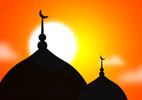
The Story of Isra Miraj
Isra Miraj was an important night, where Muhammad had two special journeys. According to the Quran, first he was transported from Al-Haram mosque to Jerusalem (Isra). There, he visited Al-Aqsa mosque. On the second journey, he ascended to heaven (Miraj), and spoke with some of the prophets.
“Exalted is He who took His Servant by night from al-Masjid al-Haram to al-Masjid al- Aqsa, whose surroundings We have blessed, to show him of Our signs. Indeed, He is the Hearing, the Seeing” (Qs 17:1).
After returning from the journeys, Muhammad brought a new requirement for Muslims. They must now pray five times a day .
No Witnesses of Muhammad’s Journeys!
Have you ever wondered whether Muhammad really took these journeys? Were there witnesses? We (the Isa and Islam staff) have searched the Quran, Hadith, and other Islamic texts. We can’t find any witnesses. If there are no witnesses, how can we prove their authenticity? It’s like an old woman accusing a young man of stealing her money from her bag. Yet there is no proof. How can this young man’s crime be proven?

Some Muslims claim Muhammad traveled literally. Others claim it was spiritually. But where is the proof? According to Muhammad’s wife, Aisha, Muhammad’s body remained where it was and his journey was only spiritual (Ibn Ishaq, Sirat Rasulullah, 183). Yet, she didn’t actually witness Muhammad’s journey spiritually. So, her testimony can’t be accepted as a witness of his journeys.
Isa Al-Masih’s Literal Ascension
Long before Muhammad claimed to have this vision, Isa Al-Masih ascended literally to heaven. This event is true and testable. Isa’s disciples and followers witnessed this event. “He [Isa] was taken up before their [disciples] very eyes, and a cloud hid him from their sight. They were looking intently up into the sky as he was going, when suddenly two men dressed in white stood beside them. ‘Men of Galilee,’ they said, ‘why do you stand here looking into the sky? This same Jesus, who has been taken from you into heaven, will come back in the same way you have seen him go into heaven’” (Injil, Acts 1:9-11).
When Will Isa Come a Second Time?

Have you believed in Isa Al-Masih? Being faithful in ritual prayer or other obligations won’t get you into Paradise. Without believing in Isa Al-Masih, that He died to pay for your sin , those won’t help you. Believing in Isa means to turn from your sin and follow Him. Do you want to believe in Him? [We invite you to visit us at https://www.isaandislam.com/way-of-salvation to learn more about God’s gift of Salvation. God loves you and waits to hear from you. Isa clearly said, “I am the way, the truth, and the life. No one comes to the Father except through Me” (Injil, John 14:6) For a deeper understanding of Isa, we suggest you subscribe to “Isa, Islam, and Al-Fatiha” at this link .]
SOME QUESTIONS FOR THE COMMENT SECTION BELOW
We encourage our readers to comment on the article above. Comments that don’t directly relate to the topic will be removed. Please start a dialogue with us by focusing on one of the following questions:
1. Do you believe Muhammad’s journey was literal or spiritual? Why or Why not? 2. Do you know of any witnesses to Muhammad’s journey? Who are they? 3. When you compare Muhammad’s ascension and Isa Al-Masih’s ascension, which one do you think is more likely?
Reader Interactions
23 May 2014 at 7:54 pm
` Where are Prophet Muhammad’s witnesses? Is that the question?
The Quran is his witness! This man, Prophet Muhammad p.b.u.h., (who could not read or write), living in the wilderness of Arabia, was able to advocate without hesitation, or any scientific instruments available to him at that time, could tell you with absolute 100% accuracy in Qs 43:11, [b]“And who sends down rain from the sky in measured amounts, and We revive thereby a dead land – thus will you be brought forth.”[/b] 2000 years later, it was discovered that the exact amount of water that falls from the sky also evaporates from the earth (proving that what Prophet Muhammad said was indeed 100% correct). So why don’t you believe him when he advocates his Miraj?
I have merely quoted one scientific statement mentioned in the Quran. Bear in mind that the Quran is filled with many scientific facts!
3 June 2014 at 3:21 pm
~ Dear Saadiq,
Thank you for your comment. How could the Quran be Muhammad’s witness? Muslims believe that the Quran is purely God’s Word. But there were no witnesses to prove Muhammad’s testimony in the Quran.
The question that we are asking is not where Muhammad’s are witnesses in general, but where are his witnesses specifically to his miraj? We know much about Muhammad’s life from reading the Hadith, as well as other historical texts. But when it comes to the Isra Miraj, there are no actual witnesses!
17 July 2014 at 9:26 pm
` Dear Friends: We highly value all comments on our website. Yet we do have some guidelines:
1. No one may enter more than one comment at a time. Thus you may not fill multiple comment boxes.
2. Your comment should be directly related to the theme of the lead article.
3. It is best if you only put forward one or two questions at a time.
4. Use good English. If the comment is not clear, we may edit it.
5. Don’t use abbreviations.
6. Do not use capital letters to emphasize something.
7. Do not include any hyperlinks.
8. Do not copy and paste an article from somewhere else into your comment. We want your own ideas, not someone else’s!
18 July 2014 at 8:57 pm
` Qs 17:1 – [b]”Glory to God. Who did take His Servant for a journey by night. From the sacred Mosque. To the farthest Mosque. Whose precincts We did Bless, – in order that We might show him some of our signs: for He is the One who heareth and seeth (all things)[/b]”
The above verse is the proof of the Miraj.
So why is the Quran the proof? – If everything scientific in the Quran (as advocated by the Prophet Muhammad (p.b.u.h.) is 100% correct (1500 years later confirmed by scientists), then logic and reason should prevail in any “normal human being” as to the authenticity of the other verses in the Quran, specifically verse 17:1 which is in reference to the Prophet Muhammad’s (p.b.u.h.) Miraj.
The Quran is the proof that the Prophet Muhammad (p.b.u.h.) never uttered a single word of lie! If he did, then all those scientific verses in the Quran should all be completely incorrect as well, which is not the case (unless you can prove otherwise).
So if Prophet Muhammad (p.b.u.h.) mentioned his Miraj, then surely logic tells you that what he said about his Miraj has to be absolutely truthful. That is why the Quran serves as his proof!
25 July 2014 at 5:51 pm
I would still ask, where are the witnesses to Muhammad’s Miraj? Every other prophet that does miracles in the Quran has witnesses to his miracles, and this is how we know they happened. But Muhammad has no witnesses. So why should I believe it happened, when he is the only prophet who did something and expects us to just believe his words? No other prophet does this.
29 January 2019 at 6:13 pm
` John 7:16-18 King James Version (KJV) 16 Jesus answered them, and said, My doctrine is not mine, but his that sent me. 17 If any man will do his will, he shall know of the doctrine, whether it be of God, or whether I speak of myself. 18 He that speaketh of himself seeketh his own glory: but he that seeketh his glory that sent him, the same is true, and no unrighteousness is in him. Muhammad is a False Prophet .
21 June 2019 at 9:46 pm
Muslims need to have the right faith in God. God has clearly showed His way through the Taurat, the Zabur, and the Injil.
27 February 2019 at 10:14 am
~ Please don’t forget that the Quran contains scientific errors. It says the sun sets in a muddy pool and people live near the sun sets.
12 July 2019 at 2:48 pm
~ Witnesses are not a reason for evidence.
19 July 2019 at 12:46 pm
~ Dear Don, Thank you for your comment. Sorry we have to edit your comment because you copied a link from a different website.
Suppose that someone is in court. He was accused of telling lies about his neighbor. How could he prove to the judge that he didn’t do it? He could prove it in 2 ways: 1. He just tell the judge that he didn’t do it. 2. He has several witnesses who proves that he didn’t do it. Which one do you think the judge will believe? The witnesses provide the evidence for him.
Jesus was surrounded by witnesses when He ascended to heaven. “ …he was taken up before their very eyes, and a cloud hid Him from their sight” (Injil, Acts 1:9). They clearly saw Jesus taken up, and they saw a cloud. It’s not a story. Can you please give me even one piece of evidence that at least one person saw Muhammad go up to heaven and return?
12 July 2019 at 3:39 pm
~ If the Quran was not orally revealed by God (Allah), muhammad PBUH would never say ‘Allah is your God.’ In fact, Muhammad PBUH said Allah is my God and your God and worship Him (alone). The same thing that was said by Isa Al-Masih PBUH, Isa Al-Masih PBUH said ‘acknowledge and take to heart this day that the LORD is God in heaven above and on the earth below and there is no other’ (Biblehub New International Version). Allah is The LORD, The LORD is God
19 July 2019 at 12:52 pm
~ Thank you for your comment. You quoted from the Book of Deutoronomy : “Acknowledge and take to heart this day that the LORD is God in heaven above and on the earth below. There is no other” (Deutoronomy 4:39). This is what Prophet Moses said to the people of Israel when he gave them advice. So this is the God of Israel, not the God of other people. It’s important we read the entire book so we can understand the context of what is happening and who is being spoken to. The LORD in the Hebrew is Yahweh.
Do Muslims ever refer to Allah as Yahweh?
12 July 2019 at 3:53 pm
~ May i ask you a question? What are the scientific proofs for the resurrection of Jesus? Because the witnesses are just a story
P.S Post all my comments
19 July 2019 at 2:20 pm
~ May I ask you what kind of scientific proof are you looking for ? Do you believe in miracles?
Some of the evidence established by scientific methods of His ressuraction. For example, radiocarbon dating demonstrates that Isaiah 53’s prediction that Jesus “see the light of life” after dying was written at least 100 years before His birth.
The Resurrection is God’s direct, supernatural action in a specific physical event in history. The obvious finality of physical death (both in modern science and to the ancient world) serves to highlight the role of God in this moment. We never consider God’s action in science, so we cannot even ask the question without opening our minds to things beyond science.
1 March 2020 at 2:47 am
~ There are four possibilities:
God- One Eternal form of matter that creates all that we see out of nothing ( David Steineker) Gods – more than one eternal form of matter. This is where we stand in science. Matter has not been turned into nothing. Multiple different forms have not been proven to be broken down to one False God – The is Ex Nihilo. This has a zero percent chance of happening. Why do people believe it. They want to be Jesus. Ex Nihilo. Means God is separate from creation. This is a false god because it requires something it can’t have. Jesus was asked to show us a sign which means demonstrate Ex Nihilo. He responded I will raise myself up 3 days latter. False Gods- Big Bang. Nothing from emptiness requires something it can’t have. Add Ex Nihilo Yes Mohammed ascended
10 March 2020 at 12:44 pm
~ Dear David,
Thank you for your comment.
You said Mohammad ascended, but where are the witnesses? Even his wife said that his body remained.
This would mean that it could not have been a physical ascend. As for spiritual, it becomes a “he said, she said” kind of thing. No proof one way or the other.
As for Jesus, in the beginning of the Book of John, John systematically builds a clear case for the nature and character of Jesus:
• The Word is eternal (John 1:1-2) • The Word is God (John 1:1) • The Word is the creator (John 1:3) • The Word is the source of life (John 1:4) • The Word is the source of salvation (John 1:12) • The Word became flesh (John 1:14) • The Word is the Son of God sent by the Father (John 1:14)
So Jesus has performed Ex Nihilo!
16 March 2020 at 9:21 pm
Genesis 1:1 and john1:2 are not in agreement. The Jews and Muslims do not believe that Jesus is God because the premise of Ex Nihilo means that God is separate from creation. The Jews did not predict that Jesus would forgive sin and offer eternal life. Ex Nihilo is a product of the Devil because it promotes an end and does not promote John 3:16.
In addition, a virgin birth is not a singularly and is an macro evolutionary mechanism. It is not mentioned In Genesis, so it can’t be associated with creationism or the fall.
14 April 2020 at 11:58 am
Genesis 1:1 and John 1:1-2 are in perfect agreement. God the Father, and the Son and the Holy Spirit, the Trinity, is before time and creation. Because the Jews and Muslims do not believe in Jesus as God, does not mean it is not so.
The Jews were constantly looking for their Messiah. The Messiah is the anointed one. Jesus fulfilled Scriptures prophecies about the coming Messiah. The Jews refused to acknowledge this. There is Scripture in the Old Testament prophesying that the Messiah will forgive sins and the forgiveness of sins would be for all, not only for Jews.
In old testament times prophecy looked forward to the suffering servant whom God would exalt because by his death he would justify many (Isaiah 53:1-12).
The people of the Mosaic age could do nothing on their own to remove their guilt. They transgressed, the punishing stroke was due them, and they had no recourse except this promise of God’s Servant who would be punished in their stead. This was true not only for them but for people in every age.
Because the Lamb would be led to the slaughter, people of faith could sing, “You forgave the iniquity of your people; you covered all their sin… Loving kindness and truth have met together; righteousness and peace have kissed each other” (Psalms 85:2,10).
Also in Galatians 3:6-14, Paul wrote, Long before the old testament law was given by Moses, Abraham was justified – made right with go having his sins forgiven.
Not only was Abraham forgiven before the law existed, but he was not yet even circumcised. Abraham was granted forgiveness and justification because he believed God. God counted Abraham’s faith as righteousness.
The sacrifices made under the law could not take away sins; it was impossible; and those sacrifices only pointed to the offering of Jesus’s body and blood (Hebrews 10:1-18). Once he made that sacrifice there was no longer any need of further sacrifices. Sins could now be remembered no more.
The death of Jesus enabled “the redemption of the transgressions that were committed under the first covenant” (Hebrews 9:15). This was their faith and hope.
So their justification and forgiveness of sins rested on the promised Christ. They knew that goats couldn’t take away their sins, but by faith in Christ they could have their sins provisionally forgiven against the day that Christ would bring redemption.
29 October 2022 at 5:35 am
~ Jesus Christ Ascension is credible because of witnesses. He was surrounded by people When he died, rose from the dead, and ascended to heaven. Throughout Jesus life on earth, each miracle he performed was witnessed by people. Can Muhammad claim the same? There is no comparison between the two.
30 October 2022 at 5:10 am
~ Dear Cecille,
Yes, it is written that the resurrected Jesus was seen more than 500 people.
“For I delivered unto you first of all that which I also received, how that Christ died for our sins according to the scriptures; and that “For I delivered unto you first of all that which I also received, how that Christ died for our sins according to the scriptures; and that he was buried, and that he rose again the third day according to the scriptures : and that he was seen of Cephas, then of the twelve: after that, he was seen of above five hundred brethren at once ; of whom the greater part remain unto this present, but some are fallen asleep.” (1 Corinthians 15:3-6 KJV)
28 December 2023 at 10:50 pm
~ To all readers, this is Roger Paul who was born a Muslim and converted to Christianity at the age of 21 in Uganda.
The story of Jesus and Mohammed is written on the wall and needs no magic bullet to ascertain. Muhammed died a natural death and was buried in Mecca where Muslims go annually for pilgrimage. Muhammed never performed a single miracle.
Jesus Christ was crucified and later ascended to heaven and many witnessed his resurrection. He raised people from death like Lazarus. There is no way Muhammed could have gone to heaven, speak with God and return to die and be buried. Isra and Miraj narrative may be hallucinations from Mohammeds dreams.
I converted to Christianity after proving that there was nothing tagging Mohammed to God apart from the Quran that mentions his wife Khadija.
29 December 2023 at 12:33 pm
~ Thank you for your testimony, Roger Paul.
Muhammad himself is a sinner (Sura 47:19). Only the Lord Jesus has the power to forgive sins and to save people from hell.
“So know, [O Muhammad], that there is no deity except Allah and ask forgiveness for your sin and for the believing men and believing women. And Allah knows of your movement and your resting place.” (Sura 47:19)
“Jesus saith unto him, I am the way, the truth, and the life: no man cometh unto the Father, but by me.” (John 14:6 KJV)
“But that ye may know that the Son of man hath power on earth to forgive sins,” (Mark 2:10 KJV)
RULES FOR COMMENTING
We reserve the right to edit or delete, in part or in whole, comments that contain words or phrases that are offensive, disrespectful, or aggressive in nature as well as comments that do not relate to the topic article. Furthermore, we reserve the right to edit comments to correct grammar or sentence structure to improve its readability. 1. Please use clear and unabbreviated language. 2. Please relate questions and comments to the article. 3. Please do not post more than two questions. 4. Please be polite and unaggressive. 5. Please use only English or give the English translation of non-English words. 6. Please use only one box. 7. Please do not use forms of emphasis such as capital letters, etc…
Leave a Reply Cancel reply
Your email address will not be published. Required fields are marked *

If you have questions or comments, please contact us by clicking the button below.

Weekly Bulletin Isa And Al-Fatiha
If you want to receive the weekly meditations on Isa Al-Masih and Al-Fatiha, please click the button below

Social Media
Mandisa, 'American Idol' singer and Grammy winner, dies at 47

Grammy-winning singer Mandisa, who rose to fame on season five of “American Idol,” has died, her representative said Friday. She was 47.
“We can confirm that yesterday Mandisa was found in her home deceased," her representative said in a statement to NBC News. “At this time we do not know the cause of death or any further details.”
“We ask for your prayers for her family and close knit circle of friends during this incredibly difficult time,” the statement concluded.
She was found dead in her Nashville home, according to The Tennessean .
A post on the artist's Facebook page said early Friday: “Mandisa was a voice of encouragement and truth to people facing life’s challenges all around the world. She wrote this song for a dear friend who had passed in 2017.”
“Her own words say it best. I’m already home / You’ve got to lay it down / ‘cause Jesus holds me now— / And I am not alone.”
The singer, whose full name is Mandisa Lynn Hundley, shot to stardom after placing ninth on “American Idol.” She went on to win a Grammy for Best Contemporary Christian Music Album in 2014 for her album “Overcomer.”
Originally from Sacramento, California, Mandisa grew up singing in church and studied vocal performance at American River College, and continued her studies at Fisk University in Nashville, Tennessee, according to her record label artist bio . After college, she worked as a session and backup vocalists for artists including Shania Twain and Trisha Yearwood before going on "American Idol."
In 2017, the singer told “Good Morning America” that she fell into a deep depression in 2014 and almost took her own life following the death of her close friend, Lakisha Mitchell , who had breast cancer.
“It got pretty bad — to the point where if I had not gotten off that road I would not be sitting here today,” Mandisa said. “I was this close to listening to that voice that told me, ‘You can be with Jesus right now, Mandisa. All you have to do is take your life.’"
“It almost happened. But God is what I say. He saved my life quite literally,” she added.
She revealed that in her dark state, she resorted to emotional eating and isolation.
“(Emotional eating) is what I have done my entire life,” she explained. “After losing over 120 pounds, which I talked about my first time here, I gained it all back and 75 more. I sunk into the deepest depression of my life after Kisha died.”
She said her friends ultimately intervened and she got help.
Mandisa had released six studio albums, the last being 2017’s “Out of the Dark.”
Tributes poured in following news of Mandisa’s passing.
“Her kindness was epic, her smile electric, her voice massive, but it was no match for the size of her heart,” Christian radio station K-LOVE Chief Media Officer David Pierce shared.
“Mandisa struggled, and she was vulnerable enough to share that with us, which helped us talk about our own struggles. Mandisa’s struggles are over, she is with the God she sang about now. While we are saddened, Mandisa is home. We’re praying for Mandisa’s family and friends and ask you to join us,” he added.
“Good Morning America” host Robin Roberts wrote on X : “My heart is heavy hearing about Mandisa. Incredibly blessed that she was there my first day back on @GMA following my long medical leave. Her beautiful music & spirit lifted me and countless others.”
Singer Matthew West , who recorded the 2007 duet “Christmas Makes Me Cry” with Mandisa, said: “I am so incredibly saddened to hear about the loss of my friend Mandisa. I will always cherish the memories of times we spent together hosting award shows, going on tour, and most of all helping her tell her story in the songwriting room.”
This is a developing story. Please check back for updates.
Breaking News Reporter
- Skip to Content
- Skip to Main Navigation
- Skip to Search

IUPUI IUPUI IUPUI

- Meet the AVC
- Campus Career and Advising Services
- IUPUI Career EDGE
- Office of Student Employment
- Instructor Quick Guide
- Student Engagement Roster (SER)
- Student Commencement Speaker
- Honors College
- Institute for Engaged Learning
- University College
- Analytical Reasoning
- Arts/Humanities
- Civics Literacy
- Core Communication
- Cultural Understanding
- Life and Physical Sciences
- Social Sciences
- General Education Course Proposals
- General Education Review
- IUPUI Profiles
- Learning Communities
- Development of New Degrees, Minors, and Certificates
- Meeting Minutes
- Policies (General Education)
- Undergraduate Affairs Committee Roster
Division of Undergraduate Education
- DEAP celebrates diversity during Cincinnati field trip
DEAP students take interactive field trip to Cincinnati
By: Heaven Xiong
Tuesday, April 23, 2024
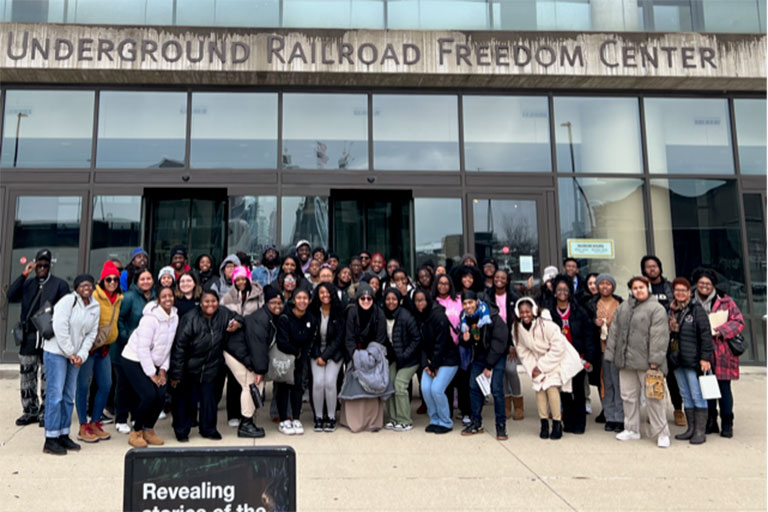
The Diversity Enrichment and Achievement Program (DEAP) has continued to increase campus commitment to diversity among its students. In celebration of Black History Month, the program took its students on an interactive trip to the National Underground Railroad Freedom Center in Cincinnati.
DEAP centers its purpose on fostering a community of support and executing uplifting initiatives to assist underrepresented groups of students in transitioning to and succeeding in college.
Cory Clark is the director of DEAP and believes these educational trips aid students in developing cultural awareness, identity, and a sense of belonging.

“Part of DEAP’s objectives and outcomes is ensuring that students understand their culture and identity and being able to expose others to different cultures and identities because a lot of students have separate backgrounds,” Clark said.
Beyond DEAP, students from programs such as 21st Century Scholars, Indy Achieves, and TRIO Student Support Services participated in the trip.
“Sometimes it’s not always about being in a presentation and learning these things but being able to go out and experience art and culture and having these different ways of learning not only your identity, but other cultures, other histories,” Clark said.
Dre’von Smith and Lakyah Berry are two students still left in awe from the trip.
Smith, a sophomore majoring in visual communication design, has been in DEAP since his freshman year.
Smith highlighted the trip’s deviation from a general classroom experience, with the trip having more hands-on learning and providing relatable real-world examples of culture and identity.
“Experiences such as these help students to better understand areas of oppression and ways to understand different rules and laws in effect to provide individuals with the pursuit of freedom and opportunity,” Smith said.
Berry, a freshman majoring in social work, was moved by the exhibits’ raw display of narratives.
"Trips like this can help encourage thoughtful dialogue because it allows present generations to really reckon with the history of our society in a meaningful way," Berry said. "We were able to cry together at some of the exhibits and process this history together. Understanding how our past shapes our present and futures is vital."
Understanding how our past shapes our present and futures is vital. Lakyah Berry, freshman social work major
The program has been actively hosting similar trips since early last year. During the spring 2023 semester, the program took students to the Muhammad Ali Center in Louisville, Kentucky. The trip aimed to expose students to Ali’s history not only as an athlete but also as a civil rights and social justice advocate.
The previous semester’s trip occurred during Latinx Heritage Month, where students had the opportunity to travel to Chicago to visit the National Museum of Puerto Rican Arts and the National Museum of Mexican Art.
Clark anticipates planning future trips for students and recognizes a positive correlation between educational trips and how they contribute to identity and self-efficacy.
“It contributes not only to identity development and cultural awareness, but also a sense of community amongst our students, which is very essential for student success,” Clark said.
For more information, contact the Division of Undergraduate Education Office of Communications at [email protected] .
Division of Undergraduate Education social media channels
- Faculty/Staff Tools

IMAGES
VIDEO
COMMENTS
Terminology. Isra means walking or traveling at night; miʿraj means rising, or going up to a high place.. Basis in Islamic sources. The events of Isra and Miʿraj are mentioned briefly in the Quran and then further expanded and interpreted within the hadith (the literary corpus of reported sayings of Muhammad), which form supplements to the Quran. Two hadith sources on the Isra and Miʿraj ...
Academia - A Reconstruction of the Meaning of Isrāʾ in Qur'an (Mar. 29, 2024) Miʿrāj, in Islam, the ascension of the Prophet Muhammad into heaven. In this tradition, Muhammad is prepared for his meeting with God by the archangels Jibrīl (Gabriel) and Mīkāl (Michael) one evening while he is asleep in the Kaʿbah, the sacred shrine of Mecca.
As we travel up through the seven heavens with Prophet Muhammad, it is important to remember that the places he visits are not part of Paradise.. In the English language, we generally use the word heaven to mean the spiritual plane of eternal happiness, the reward for a righteous life and the opposite of Hell, the place of eternal punishment.. However, this was not always the case; the word ...
Allah's promise to the Prophet (S.A.W.) that the sins of his Ummah will be forgiven except for those who died in shirk. (Sahih Muslim: 173) Last Two Verses of Surah Al-Baqarah. After completing this blessed journey, Prophet (S.A.W.) mounted Al-Buraq and returned to Makkah. The whole journey of Isra and Miraj took place in one night.
It is also known by the name Lailat-Al-Miraj. It is recognised as the day when Prophet Muhammad (PBUH) ascended to all the seven stages of heaven. It is believed that this was the day when an angel visited and Prophet Muhammad's (PBUH) chest was opened and it was purified with Zamzam water. Later his heart was filled with sagacity and belief.
When Muhammad reached the seventh heaven he met Prophet Abraham, who declared that Muhammad was the Messenger of Allah. Abraham was resting against Al-Bayt Al-Mamur, a House of Worship around which circumambulate seventy thousand different angels every day.. After this, Muhammad reached the most beautiful tree in heaven: Sidrat Al-Muntaha, whose leaves were the size of elephants' ears and ...
The Seventh Sky. At the seventh sky, the Prophet (saw) met his greatest ancestor, the Prophet Ibrahim (as) who was 'reclining his back against al-Bait al-Ma'mur. And there enter into it seventy thousand angels every day, never to return to it (again)'. [Muslim] (Bait al-Ma'mur literally means 'the much-visited House'.
I chose the milk, so Jibra'il said, 'You chose the fitrah (natural goodness, good instinct),' then we were raised to heaven…" • The Night Journey (al-Isra') of Prophet Muhammad from Makkah to Jerusalem and the subsequent Heavenly Ascent (al-Mi'raj) was one of the most incredible and fantastic events in the history of humanity.
Quick Reference. Also known as al-Isra and Laylat al-Miraj. Refers to the journey made by Muhammad from the Great Mosque in Mecca to the Temple Mount in Jerusalem on a winged horselike creature known as Buraq, followed by Muhammad's ascension into heaven. Briefly mentioned in the Quran (17:1) but known primarily through hadith.
Every day 70,000 angels visit this much-frequented house in the seventh heaven to worship God. Prophet Muhammad informed us that, once the angels have visited Bayt al-Mamoor, they never return. God swears by this house in the Quran. "And by the Bayt al-Mamoor." (Quran 52:4) Seventy thousand angels every day!
The Night Journey and the Ascension was a great blessing bestowed upon Muhammad, the Prophet of God. It was a journey beginning at the Holy Masjid in Mecca, then moving overland to Masjid al-Aqsa in Jerusalem and finally continuing up through the seven heavens into the presence of God, the Almighty. As we travel up through the seven heavens ...
Book of Muhammad's Ladder. The Book of Muḥammad's Ladder is a first-person account of the Islamic prophet Muḥammad 's night journey ( isrāʾ) and ascent to heaven ( miʿrāj ), translated into Latin (as Liber scalae Machometi) and Old French (as Livre de l'eschiele Mahomet) from traditional Arabic materials. Although presented as ...
Prophet Muhammad ascended to the lowest heaven from a rock. This rock can be found inside the Dome of the Rock, the most famous symbol of Jerusalem. It should not be confused with the actual masjid building, which is on the other side of the Al-Aqsa compound. The entire precinct is the masjid, but many separate buildings exist there.
in heaven, while Muhammad's visit is only temporary, and when. Muhammad died and cUmar, one of his friends, claimed that he was not really dead but had gone to Allah and would return after forty days, he was silenced by another of Muhammad's friends, Abdi Bakr, who recited the verses: "Muhammad is nothing but an apostle.
Dome of the Ascension of Muhammad. The Dome of the Ascension (Arabic: قبة المعراج, romanized: Qubbat al-Miʿrāj) is an Islamic free-standing domed structure built by the Umayyads that stands just north the Dome of the Rock on the al-Aqsa compound in Jerusalem.. It commemorates the Islamic Prophet Muhammad's ascension (al-Miʿrāj) to heaven, according to Islamic tradition.
Muslims believe Prophet Muhammad (pbuh) undertook a miraculous night journey (Isra wal Mi'raj) where he traveled from Mecca to Jerusalem and ascended to heaven. This event, though not explicitly detailed in the Quran, holds deep significance and serves as a reminder of Allah's (swt) power and the Prophet's (pbuh) unique status. Table of Contents
According to Islamic belief, Muhammad was the only person to see Heaven and Hell while still alive. After the Prophet's Death: Emergence of Shi'i and Sunni Sects of Islam. When Muhammad died in 632, he had not named a successor. One faction, the Shi'a, believed that only individuals with direct lineage to the Prophet could guide the Muslim ...
The story of the miraculous night journey of the Prophet Muhammad is based on passages from the Qur'an (17:1, 53:1-18, and 81:19-25), as well as later hadith that describe his travel (isra' ) from "the holy mosque" to "the farthest mosque" as well as his ascent to heaven (mi'raj) and what he experienced there. Paintings of this wondrous event sometimes appear in illustrated ...
Muhammad described how at each level of the heavenly realm the Angel Gabriel asked permission to gain entry. In the second Heaven, he met Jesus and John the Baptist; in the third he was introduced to Joseph. The fourth level was the abode of Enoch. Occupying the fifth level was Aaron, and in the sixth was Moses.
The story of the miraculous night journey of the Prophet Muhammad is based on passages from the Qur'an (17:1, 53:1-18, and 81:19-25), as well as later hadith that describe his travel (isra' ) from "the holy mosque" to "the farthest mosque" as well as his ascent to heaven (mi'raj) and what he experienced there.
In Islam, the seventh heaven is where Prophet Muhammad met Prophet Abraham; and indeed, he (Muhammad) must have been extremely happy and in a state of bliss, having been honored with this journey of wonders. ... Every day 70,000 angels visit this much-frequented house in the seventh heaven to worship God. Prophet Muhammad informed us that, once ...
Isra Miraj was an important night, where Muhammad had two special journeys. According to the Quran, first he was transported from Al-Haram mosque to Jerusalem (Isra). There, he visited Al-Aqsa mosque. On the second journey, he ascended to heaven (Miraj), and spoke with some of the prophets. "Exalted is He who took His Servant by night from al ...
MODERATOR: Hi. Good morning, everyone. Welcome to the 8th U.S.-Iraq Higher Coordinating Committee session. It's my honor to introduce Secretary of State Antony Blinken. SECRETARY BLINKEN: Thank you. Well, good morning, everyone, and so good to see you all here today. Before getting to the HCC, let me just comment briefly on the events of the last […]
A Mindanaoan Muslim Buraq sculpture. The sculpture incorporates the indigenous okir motif.. The Buraq (Arabic: الْبُرَاق / æ l ˈ b ʊ r ɑː k / "the lightning") is a magical [vague] horse-like creature in Islamic tradition that served as the mount of the Islamic prophet Muhammad during his Isra and Mi'raj journey from Mecca to Jerusalem and up through the heavens and back by night.
By Marlene Lenthang. Grammy-winning singer Mandisa, who rose to fame on season five of "American Idol," has died, her representative said Friday. She was 47. "We can confirm that yesterday ...
The program has been actively hosting similar trips since early last year. During the spring 2023 semester, the program took students to the Muhammad Ali Center in Louisville, Kentucky. The trip aimed to expose students to Ali's history not only as an athlete but also as a civil rights and social justice advocate.